#Cultivated in France in 1945
Text
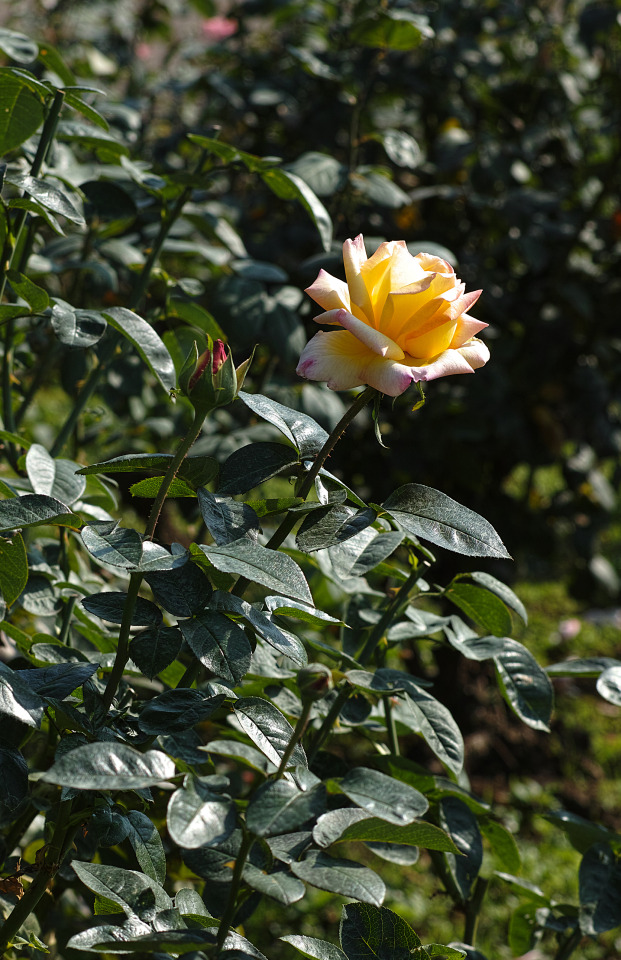
When Will the Bud Burst? The 1945 Legacy of France’s Peace Rose
#This rose commemorates the end of World War II.#Cultivated in France in 1945#peace#rose#bud#Jindai Botanical Gardens#peace rose#war#20231027
183 notes
·
View notes
Text
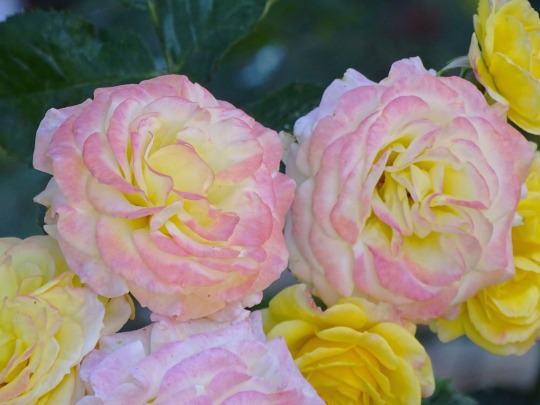
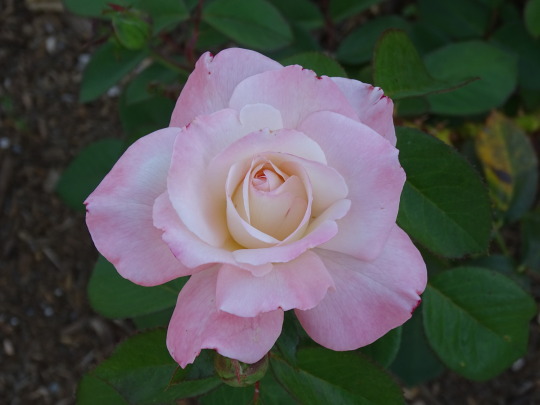

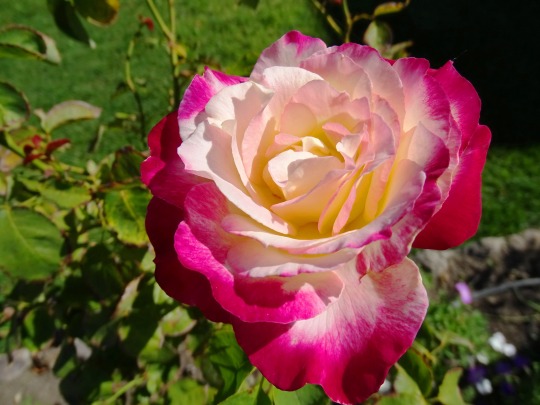

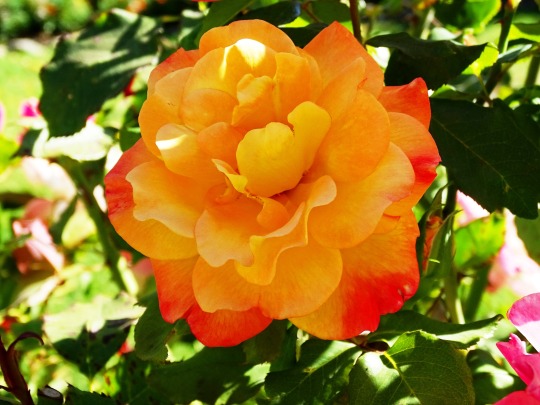

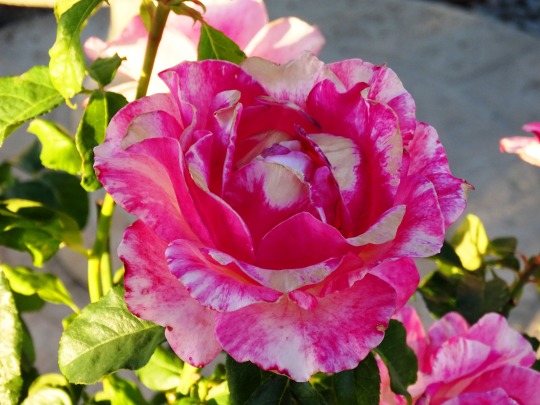



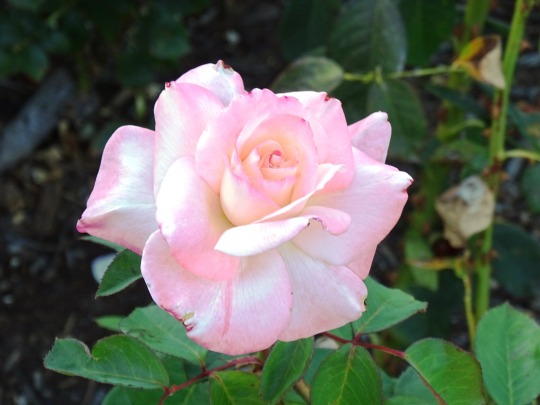
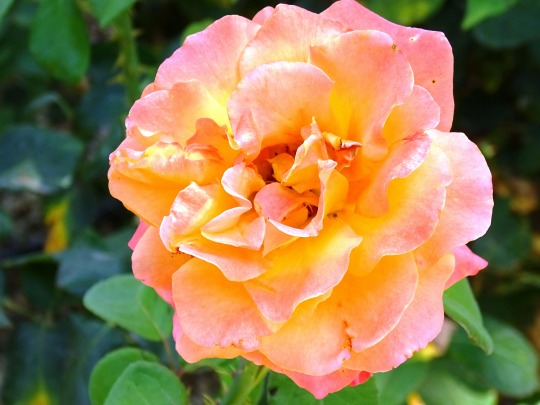

National Peace Rose Day
National Peace Rose Day is on April 29 and today we honor and celebrate this hybrid tea rose. These light-yellow or cream-colored flowers have petals with flushed crimson-pink edges. Not only are they beautiful but they are known to be hardy, vigorous, and highly resistant to disease.
HISTORY OF NATIONAL PEACE ROSE DAY
Francis Meilland, a French horticulturist, developed the Peace rose by crossing a hybridized tea rose known as the Margaret McGredy rose with another seedling. He named the rose Madame A. Meilland, after his late mother.
However, before the German invasion of France, Meilland sent the cuttings of the rose to his friends in Italy, Turkey, Germany, and the United States to protect the new flower. It is in these different countries that the rose was given other names. The official name for the rose in France is still “Madame A. Meilland”, in honor of the breeder’s mother. In Italy, it was given the name ‘Gioia,’ meaning ‘joy.’ In Germany, it was called ‘Gloria Dei,’ meaning ‘glory to God.’ In the United States, it was named the Peace rose.
In the United States, Robert Pyle of the Conard Pyle Company, based in Pennsylvania, gave it its American name in 1945. While the war raged on in Europe, Pyle cultivated the rose and sent the samples to the American Rose Society for review. After Germany left France, he contacted Meilland and informed him that the rose would be introduced to the American public as the war ended. The name ‘Peace’ was given to the rose by Pyle in honor of the impending global peace. These roses were given to each delegate at the inaugural United Nations meeting in 1945 in honor of Germany’s surrender.
It is since then that National Peace Rose day is celebrated to mark the day that this rose received its American name and the symbolism behind it.
NATIONAL PEACE ROSE DAY TIMELINE
1930s
The Invention of the Peace Rose
French horticulturist Francis Meilland develops the Peace Rose in France by mixing different breeds of roses.
1945
Peace Rose at the United Nations
Peace roses are given to delegates at the inaugural meeting of the United Nations with a note that reads: “We hope the Peace rose will influence men’s thoughts for everlasting world peace.
1976
Rose Hall of Fame
The Peace rose is chosen as the World’s Favorite Rose and gets inducted into the Rose Hall of Fame.
1992
One Million Plants Sold
The Peace rose sells in quantities of over a million and gains more popularity.
NATIONAL PEACE ROSE DAY FAQS
Does the Peace rose have a scent?
Yes, the Peace rose has a very sweet and fruity scent that can range from mild to strong.
Is the Peace rose extremely popular?
Yes, the Peace rose has gained significant popularity over the years and even won awards such as gold medals in Lyon (1942), Portland (1944), and The Hague (1965) and was named the Most Beautiful French Rose in Lyon (1942) and World’s Favorite Rose (1976). It was included in the All-America Rose Selection in 1944.
How big does a Peace rose grow?
The Peace rose can grow up to five or six feet tall and has large foliage with big multi-petaled flowers that are up to five inches across when fully opened.
HOW TO OBSERVE NATIONAL PEACE ROSE DAY
Plant your own rose: What better way to celebrate Peace Rose Day than sharing the love and peace amongst your friends and family? Why not send them a Peace rose plant as a gift? Or plant it in your own home and see it grow and blossom.
Visit a rose garden: Why not spend Peace Rose Day in a rose garden? Visit a nearby rose garden or a nursery that houses roses and spend time with these beautiful flowers. They will instantly uplift your mood.
Read a book about roses: You can even indulge in some reading about roses such as “Roses” by Peter Beales. In fact, in his book he even states that the Peace rose is without a doubt, the finest hybrid tea rose ever cultivated and will remain a standard variety forever.
5 FACTS ABOUT ROSES THAT WILL BLOW YOUR MIND
World’s oldest rose: The world’s oldest rose is believed to be 1,000 years old and grows on the Cathedral of Hildesheim in Germany.
World’s most expensive rose: Juliet, a 2006 variety of rose by renowned rose breeder David Austin is the world’s most expensive rose, and breeding it amounted to $5 million.
Tallest rose: Roses, in general, can grow quite tall and the tallest rose ever recorded stands at over 23 feet tall.
Long lifespan of roses: Roses are known to have a rather long life span and, interestingly, there are rose fossils that were discovered that date back 35 million years.
No black roses: While there are a plethora of colors available in roses, there are no black roses, and if there are roses that look black, they’re actually a dark red.
WHY NATIONAL PEACE ROSE DAY IS IMPORTANT
It encapsulates life and history: The Peace rose was sent off to different parts of the world during the Second World War for its protection and thus it makes us remember and honor our history
It promotes peace: The rose was literally named after the impending global peace and thus this day marks a day of harmony and peace. You can offer a Peace rose plant to your nearest and dearest and manifest peaceful energy.
Roses are beautiful: Roses are an absolutely beautiful flower and they also promote and symbolize love. The Peace rose, which looks exotic with its crimson-pink edges, can make anyone fall in love with it and evoke a sense of calm.
Source
#Mora#Ystad#Oropesa del Mar#Sweden#Spain#Sonoma#St. Helena#California#Domaine Carneros#Cline Family Cellars#Louis M. Martini Winery#National Peace Rose Day#29 April 1945#anniversary#US history#two-colored roses#NationalPeaceRoseDay#nature#travel#vacation#summer 2022#2020#2021#original photography#tourist attraction#garden
0 notes
Text
Ho Chi Minh Complex, Hanoi
February 14, 2024
Ba Dinh Square
Ba Dình Square is named after an uprising, an anti-French rebellion, that occurred in the late 1800s. It is here where president Ho Chi Minh read the Proclamation of Independence of Vietnam on September 2, 1945, establishing the Democratic Republic of Vietnam. And inside this complex are located various government buildings.
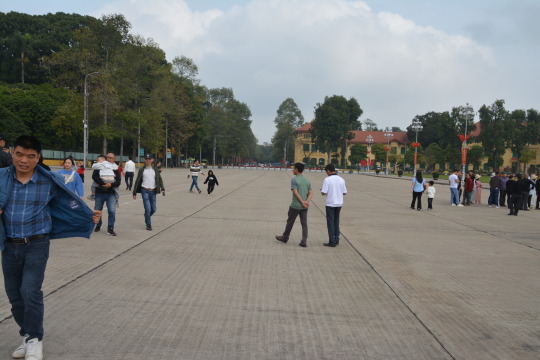
During World War II, Japan drove the French out of Vietnam (& Indochina). Upon the defeat of Japan, and before the return of the French occupying forces, Ho Chi Minh declared independence for Vietnam. His speech began quoting verbatim portions of the American Proclamation of Independence: “All men are created equal. They are endowed by their Creator with certain inalienable Rights; among these are Life, Liberty, and the pursuit of Happiness.”
Vietnam, under its continued communist regime since then, has never lived up to those ideals. They are still perfecting their republic about 75 years after that speech, but then so were we at that stage after our constitution was adopted (and still are working on this never-ending task).
Ho Chi Minh Mausoleum
Final resting place for Ho Chi Minh, uncle Ho (Bac Ho as he is affectionally known in Vietnam) who died in 1969. A granite mausoleum, inspired by Valdemar Lenin’s mausoleum, was built in 1975 to display Ho’s embalmed body. In fact, every year Ho's body is shipped to Russia to have the embalming fluid recharged. Apparently, the Russians have perfected this procedure with their 100-year experience of preserving Lenin's body.
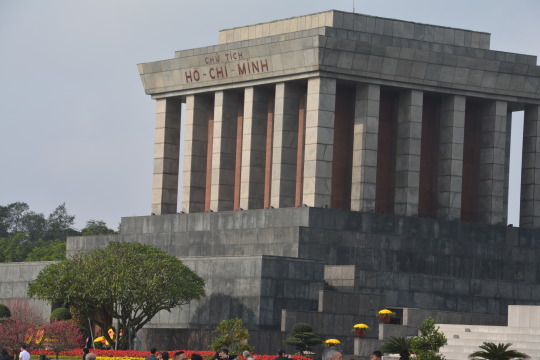
No photography is allowed inside of or on the approach to the mausoleum. Cameras are confiscated before joining the half-mile-long line snaking across the courtyard to the entrance of the mausoleum, and guards are posted about every 50 feet all the way thru exit from the mausoleum. Mysteriously, my camera, which I parted with reluctantly, appeared at this other end and was returned to me unmolested upon exit.
Subsequently, from the post-exit side, I was free to take a picture of the outside of the mausoleum provided I was about 200 yards behind marked by a demarcation line. A telephoto lens helps. Yours truly was shooed away by a serious-looking guard when he accidently stepped across this demarcation line.
My attempt to locate an official to debate the absurdness of their policy came to naught.
Presidential Palace
The massive palace was built by the French to house their Governor-General to manage their colonial affairs in this part of the country. Currently it is the official residence of the President of Vietnam.
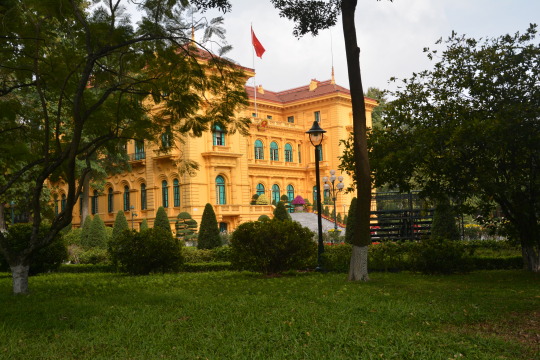
Ho Chi Minh is said to have refused to live in this palace out of symbolic reasons.
If you didn’t know what country you were in, you would guess you were somewhere in France looking at the architecture of the Presidental Palace. The only things that would refute that claim would be a few mango trees (if you recognize them) growing on the grounds and the flag flying over the building.

Ho Chi Minh's Stilt House
Initially, Ho lived in a modest-looking house near the Presidental palace.
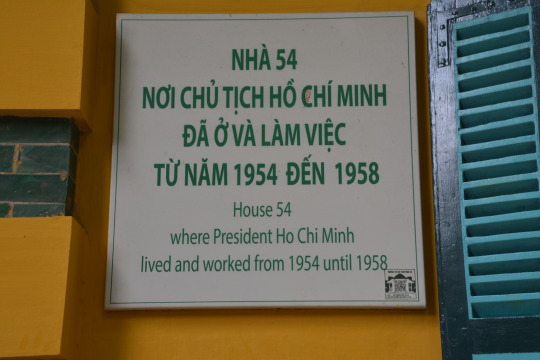
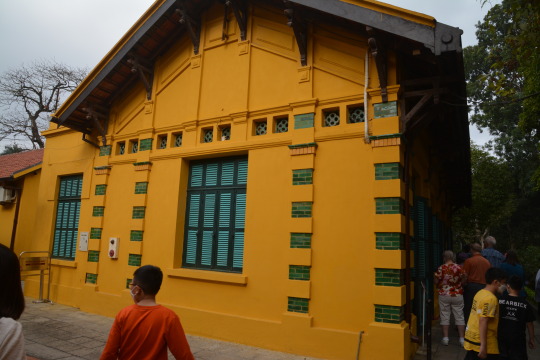
But for most of his tenure as President of North Vietnam, Ho Chi Minh, who burnished his image as a man-of-the-people, lived in an open-air stilt house, near the grandiose Presidential Palace, until his death in 1969.
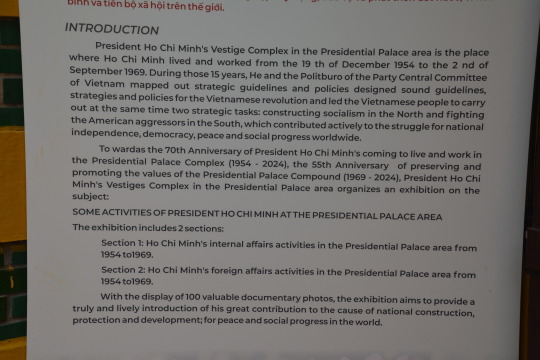
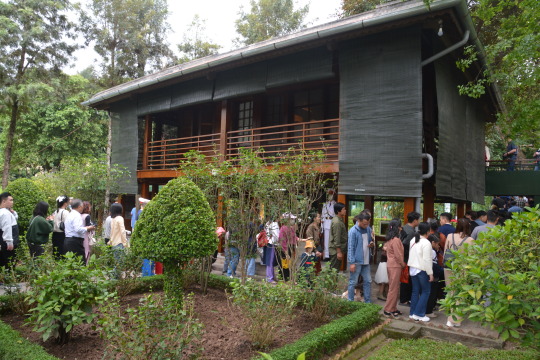
Ho cultivated a "man of the people" personality that contributed to his mystique as a leader. Official propaganda shows Ho living the simple life even as President, wearing brown cotton clothes and sandals crafted from used car tires, much the same as his fellow countrymen. (However, for some reason the authorities chose to display Ho's embalmed body wearing a suit and a tie.)

The empty space under the house was used by Ho as his office. Foreign dignitaries, party officials, and generals would visit Ho under his house and sit in simple wooden and bamboo chairs.
The stilt house goes a long way in burnishing his legend, and its propaganda value continues to this day.
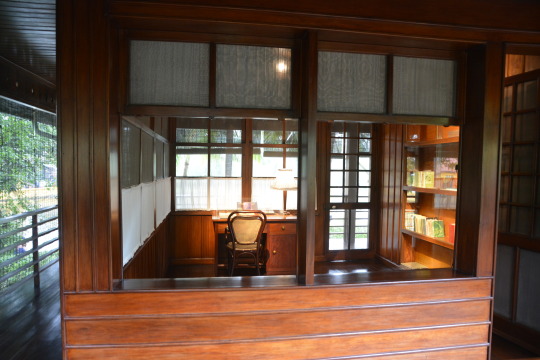

A peek inside Ho's stilt house.
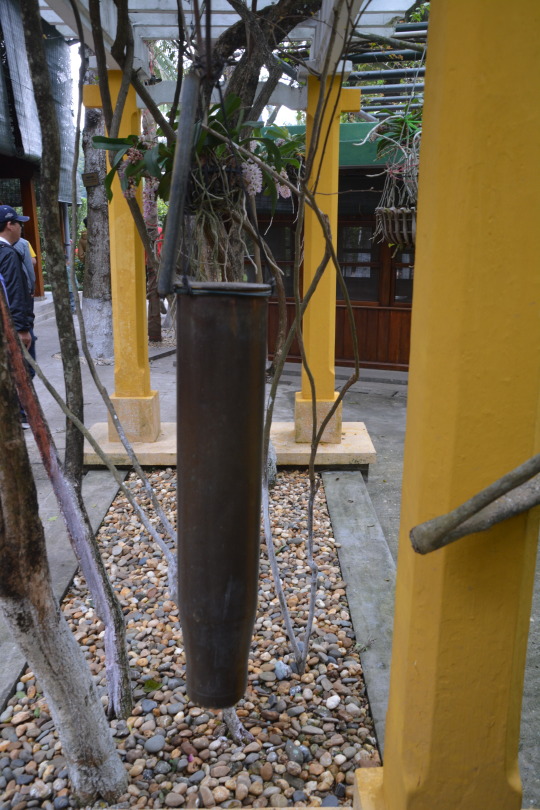
An unexploded bomb (presumably defused) hanging next to Ho's house.
And where did Ho escape to when the warning sirens of the approaching bombers come on?
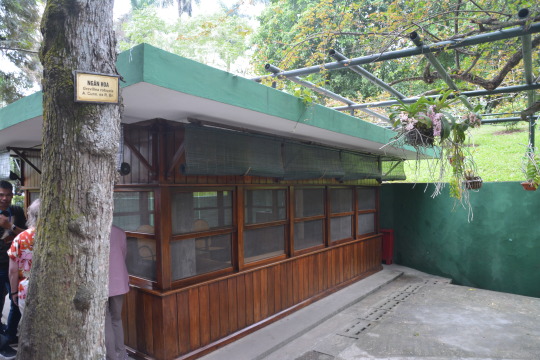
He escaped thru this passage into the bunker under the mound seen in the background.
0 notes
Text
Astrological Predictions and Character Analysis for Individuals with a May 19th Birthday
They have creative abilities and a comical inclination; they likewise show a skill for impersonation. They appreciate acknowledgment and care profoundly about their standing. Their perspectives are from here on out. They battle for power and rule over things with incredible delight. They need to manage regardless of whether it isn't required. However, ultimately these individuals will be ruled: they fall into the profound impact of their life partner. They have extraordinary hierarchical abilities and are fit for arriving at an exclusive requirement throughout everyday life. They are in the space of farming, cultivating, as well as mines and their items. Being conceived today brings good open doors for profession and riches, whether through business, effective capital venture, or through stocks, public organizations, and so on. Legacies are likewise conceivable. The organic entity of these individuals is solid, they show incredible essential power. Defects: They are frequently whimsical, envious, authoritarian. They are not autonomous, they get thoughts and motivations from others. What would it be advisable for them to look out for? His life is brimming with odd experiences and occasions. Hence, they should be careful with misfortunes. These individuals are inclined to marriage, and it is even conceivable that they accomplish abundance through their accomplices.
Astrological Predictions and Character Analysis for Individuals with a May 19th Birthday
Assuming your birthday is on May 19, your zodiac sign is Taurus
May 19 - character and character
character: pardoning, kind, independent, concerned, willing, pernicious; calling: financial analyst, innovator, architect; colors: blue-green, purple, green; stone: golden; creature: cheetah; plant: potato plant; fortunate numbers: 4,6,15,27,48,57 very fortunate number: 32
Occasions and observances - May 19
France Public Day of Brittany.
Banner of Mexico.svg Mexico Advertiser's Day.
May 19 VIP Birthday. Who was conceived that very day as you?
1906: Bruce Bennett, American entertainer (d. 2007). 1909: Nicholas Winton, English altruist (d. 2015). 1914: Max Perutz, English scholar of Austrian beginning, Nobel Prize in Science in 1962 (d. 2002). 1925 - Malcolm X, African-American enemy of bigoted pioneer; killed (f. 1965). 1925: Pol Pot, Cambodian military and legislator (d. 1998). 1928: Dolph Schayes, American b-ball player (d. 2015). 1928 - Colin Chapman, English car producer and architect (d. 1982). 1929: Estela Raval, Argentine vocalist (d. 2012). 1929: Jordi Vila Soler, Spanish footballer (d. 2011). 1930: Paulino Varas, Chilean law specialist and legislator. 1932: Paul Erdman, American author (d. 2007). 1932: Elena Poniatowska, Mexican author, extremist and columnist. 1932: Diego Jaramillo, Catholic cleric and Colombian TV moderator, leader of the Minuto de Dios enterprise. 1933: Josდ© Luis Abellდ¡n, Spanish instructor and author. 1933: Antდ³n Garcდa Abril, Spanish arranger. 1936: Ana Marდa Pდ©rez del Campo Noriega, women's activist extremist. 1939: James Fox, English entertainer. 1939: Francis Scobee, American space traveler (d. 1986); Challenger transport mishap. 1940: Jan Janssen, Dutch cyclist. 1941: Nora Ephron, American screenwriter and movie producer (d. 2012). 1942: Gary Kildall, American software engineer (d. 1994). 1943: Marisol Ayuso, Spanish entertainer. 1944: Peter Mayhew, English entertainer. 1945: Pete Townshend, English lyricist and guitarist, of the band The Who. 1946: Andrდ© Roussimoff (Andrდ© the Goliath), French proficient grappler. 1947: David Helfgott, Australian piano player. 1948: Beauty Jones, Jamaican vocalist and entertainer. 1949: Dusty Slope, American performer, of the band ZZ Top. 1951: Joey Ramone, American vocalist, of the band Ramones (d. 2001). 1951: Harry Perry, American guitarist. 1954: Marდa Medina, Mexican vocalist. 1954: Phil Rudd, Australian drummer, of the band AC/DC. 1956: James Gosling, Canadian software engineer. 1956: Rafael Larreina, Spanish legislator. 1957: Bill Laimbeer, American b-ball player. 1962: Maitena, Argentine illustrator and realistic comedian. 1962: Marcos Witt, zealous minister and American vocalist. 1963: Ana Fernდ¡ndez, Spanish entertainer. 1965: Cecilia Bolocco, Chilean TV moderator, conservative lawmaker and model. 1966: Polly Walker, English entertainer. 1967: Alexia, Italian vocalist. 1971: Dionicio Castellanos, Mexican expert grappler. 1972: Jenny Berggren, Swedish vocalist, of the band Expert of Base. 1973: Dario Franchitti, English motorsport driver. 1975: Sebastiდ¡n Prieto, Argentine tennis player. 1976: Kevin Garnett, American b-ball player. 1977: Manuel Almunia, Spanish footballer. 1977: Natalia Oreiro, Uruguayan entertainer and vocalist. 1979: Diego Forlდ¡n, Uruguayan soccer player. 1979: Barbara Nedeljდ¡kovდ¡, Slovak entertainer. 1979: Andrea Pirlo, Italian footballer. 1980: Drew Fuller, American entertainer. 1980: Christian Gდ¡lvez, Spanish entertainer and moderator. 1981: Luciano Figueroa, Argentine footballer. 1983: Eve Heavenly messenger, Hungarian entertainer. 1984: Emmanuel Orenday, Mexican entertainer. 1985: Jon Kortajarena, Spanish model and entertainer. 1988: Antonija Miვ¡ura, Croatian b-ball player. 1989: Yurika Kubo, model and Japanese voice entertainer. 1990: Vდctor Ibarbo, Colombian soccer player. 1992: Sam Smith, English vocalist. 1992: Marshmello, American DJ. 1993: Josef Martდnez, Venezuelan soccer player. 1993: Ryunosuke Kamiki, Japanese entertainer.
0 notes
Photo
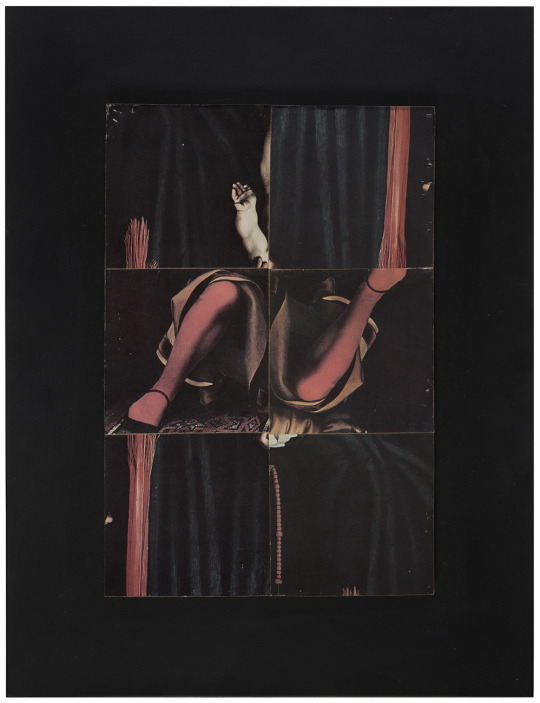
Gherasim Luca (1913–1994) | Cubomania entitled “Madone du Bourgmestre Meyer (d’après Holbein)”, 1983 Collage of photos on board, mounted on a wood panel, 34.5 x 26 cm ©Beaux-Arts, Paris
Originally from Romania, from the early 1930s Gherasim Luca (1913–1994) formed close links within the French art world, notably among the Surrealists; he settled permanently in France in 1953. Described by Gilles Deleuze as the “greatest poet in the French language,” Luca cultivated “hero-limit” work, to use the title of one of his pieces (“héros-limite,” 1953), where the deconstruction of language is based on the rejection of political, identity, and ethical categories, and reliance—twenty-five years before Deleuze and Félix Guattari—on anti-Oedipal notions. His atypical path, with the creative process is inseparable from his personal life, naturally led him to transcribe his poetic experiments into the visual arts. In addition, particularly from 1945, Luca embarked on a series of collages made from various photos of illustrations, and more significantly, reproductions of paintings, cut into squares of equal dimensions. He glued these squares side by side to form new, original, and surprising images, following a process very much inspired by the Surrealists. He called these works “cubomania,” to invoke the square’s foundational role, but possibly also as a way to mock the heirs of Cubism.
Beyond the Surrealists’ influence and that of the scandalous L.H.O.O.Q by Marcel Duchamp (1919, Musée National d’Art Moderne, Paris), Luca’s “cubomanias” of Luca staged a personal dialogue with celebrated works of art history, from Leonardo da Vinci to the Van Eyck brothers, Caravaggio to Ingres. In this work, Gherasim Luca’s point of departure is one of the best-known paintings by Hans Holbein, the Darmstadt Madonna (1527), also known as Madonna of the Lord Mayor Jacob Meyer zum Hasen, now held privately and shown in Schwäbisch Hall, but which at the time was on display in the Schlossmuseum Darmstadt. In this work Luca made particularly masterful use of the reproduction and the cropping techniques that make his cubomanias so original, using the leg of the patron’s son twice with different cut-outs, as well as the Virgin’s red belt three times. Recomposed in this way, right-side up or upside down, these figurative details take on a profoundly abstract character, reinforced by the opposition between black and red, in addition to the new continuities that Luca proposes through the association of elements that are identical in size and color. Additionally, the forms extend into the black of the support, suggesting the unfinished nature of the work, to be continued in the viewer’s imagination. Investigations into Luca’s “cubomanias” has particular resonance with the work of Holbein, who is famous for harnessing the dreamlike power of deformation by placing an anamorphosis in the center of is most famous work, The Ambassadors (1533, National Gallery, London).
52 notes
·
View notes
Text
Treat Your S(h)elf: I Drink Therefore I Am: A Philosopher’s Guide To Wine, by Roger Scruton (2009)

You could say that wine is probably as old as civilisation; I prefer to say that it is civilisation, and that the distinction between civilised and uncivilised countries is the distinction between the places where it is drunk and the places where it isn’t.
- Sir Roger Scruton, I Drink Therefore I Am: A Philosopher’s Guide To Wine
When I first got talked into investing in the dreams of my two cousins and their French families to continue to manage an old French vineyard I thought of Roger Scruton’s book. I already had this book on my shelf alongside his other works. Re-reading it nudged me to take a risk and go for it.
For one I have always loved wine and have drunk it from a very early age. Secondly what could be more cultured or civilising than to marry body and mind through the palate of philosophy and wine?
And finally, and perhaps more importantly, the opportunity to escape the madness of modernity - as well as make peace from war as a British combat veteran of the Afghan war by not so much as coming home but finding a new one - by getting back into nature with hard honest graft on the land that Mother Nature blesses. All of this I found especially appealing.

Of all the things we eat or drink, wine is without question the most complex. So it should not be surprising that philosophers from Plato and Socrates onwards to our contemporary times have turned their attention to wine: complex phenomena can lend themselves to philosophical speculation.
Wine is complex not just in the variety of tastes it presents – ‘wine tastes of everything apart from grapes’, I once heard a crusty old French vintner say – but in its meaning. Only the most woodenly literal-minded would deny that wine has a meaning: in its history, its role in human social life, in religious and other ceremonies. Though they drink it copiously over dinner at High Tables in their Oxbridge colleges, academic analytic philosophers do not spend as much time as they might in this kind of investigation of meaning or significance of wine – what we might call a phenomenology or a hermeneutic investigation.
Of course, there are more narrowly phenomenological questions which wine raises.
How do vintners or winemakers manipulate the underlying biochemical material to create the kinds of taste which they intend their wine to have? Does the ‘terroir’ of a wine really make a difference to taste, and if so how? What is the basis of evaluative judgements about the quality of a wine?
Arguably only those who actually make the wine and those who are life long wine connoisseurs can conceivably answer that on some experiential and technical level. But these are not the only philosophical questions in this area: the hermeneutic questions have their place too, in an understanding of the phenomena.

Sir Roger Scruton’s 224 page book is about the hermeneutics of wine rather than its psychology or phenomenology more narrowly conceived. Scruton, the late great conservative philosopher, is that rare breed who comes closer than most to bridging the gap between the grass roots and the High Table in answering such mysteries. The result is an engaging, insightful, informative and (in parts) a very funny book. It is immensely readable, more in the anecdotal style of Scruton’s England: an Elegy (2000) or On Hunting (1998), than his more heavyweight philosophical works, such as The Aesthetics of Music (1997), Sexual Desire (2004), Beauty (2009), and his writings on Wagner and high culture. He does often come across as curmudgeonly, but his (written) relations with women, music and poetry are very delicate and tender. And so it is with his love affair with wine. It is indeed a very personal book and its is warmly personable, like the man himself, and it contains so much of Scruton’s distinctive wit and intellectual personality, it ought to be of interest not just to wine enthusiasts (whom Scruton likes to call ‘winos’) and philosophers but also anyone curious enough to understand the place of wine in our world civilisation.

The first and obvious thing to say about Scruton’s book is how the title of the book is of course a play on words. It’s a playful wink to Eric Idle’s “Philosophers’ Drinking Song,” in which the Monty Python cast, lightly disguised as a group of Australian philosophers all named Bruce, list the world’s thinkers from a drinking standpoint. This includes the couplet slightly amending Descartes’s proof of his existence: “And René Descartes was a drunken fart / ‘I drink therefore I am.’”
The pun on words is Roger Scruton’s way of taking the Monty Python couplet seriously. After all Descartes was a serious man and though he was born in Touraine, the rich French wine region, did probably not drink much. He treats all this as a paradox that G.K. Chesterton might well have toyed with - that is, as a truth standing on its head to attract attention - and examines the drinking of alcohol as a way in which human beings learn more about each other, fellowship, some of the deeper realities, God, and not least themselves.
In this Scruton is a wise philosopher who teaches us how wine cultivates our moral virtue and our civilisation. He encourages us to recognise that stream of liquid descending from our pursed lips into our throat as the red or golden chord that runs from heaven to earth, and binds everything in-between into a cosmic whole. Wine both reflects and helps constitute our participation in all strata of reality, and points the way to our redemption, divine or otherwise.

In Scruton’s Prelude (a musical term, of course) where he quotes Emerson “who commends the great wino Hafiz [a Persian poet] in the following words: “Hafiz praises wines, roses, maidens, boys, birds, mornings and music, to give vent to his immense hilarity and sympathy with every form of beauty and joy.” This is echoed in Scruton’s terms that “by thinking with wine you can learn not merely to drink in thoughts, but think in draughts. Wine, drunk at the right time, in the right place and the right company, is the path to meditation, and the harbinger of peace.”
The book is divided into two parts, labelled ‘I drink’ and ‘therefore I am’ respectively. The second part of the book is more strictly philosophical - Scruton starts it with the nice conceit that ‘therefore I am’ contain the whole of philosophy, each word standing in turn for reason (therefore), consciousness (I) and being (am). But arguably wine and Scruton enthusiasts will probably get more out of the first part.

The first chapter is a nice description of his own discovery of wine as a young man. Warmly written, the chapter is devoted to his friends who made him “fall” for wine (or is it he who made them fall?) and his acquisition of a 1945 Château Lafite, “the greatest year from the greatest of clarets”. His first memories are happy ones of his mother’s home manufacture of elderberry wine in a post-war England where the French (and Spanish and Portuguese) grape had not yet “conquered the suburbs.”
“For three weeks the kitchen was filled with the yeasty scent of fermentation. Little clouds of fruit-flies hung above the jars and here and there wasps would cluster and shimmer on the spilled pools of juice.” Other Englishmen of Scruton’s generation will recognise and sigh at this description as many fathers - including my own - made his own beer and wine from motives of both fun and economy.
Thus ill-equipped, Scruton goes to university ignorant of the rich variety of wines available even then to an English wino. At Cambridge and, later, in Paris, a succession of tutors, patrons, and friends not only introduce him to a growing list of wines but also teach him how to drink them. Some of the wines he is given are complex and expensive Burgundies, others cheap French supermarket vin ordinaire.

But Scruton discovers that all have certain inherent qualities that an educated palate can discover by drinking them attentively and appreciatively. By learning their provenance and history, he enriches his knowledge of the locality that produced the wine — and he can imagine (I would like to believe this is so) that he can glimpse the character of the local people in the wine itself. He learns finally that certain wines go with certain things, not merely certain foods, but certain occasions, certain friends, certain thoughts, even certain topics of conversation. He becomes a wino.
When in his early middle years, Scruton buys a farm in southern England, he discovers to his delight an array of homemade-wine equipment, identical to that of his mother’s elderberry experiments, on the kitchen floor: “I listened to the bubbles as they danced in the valves, and studied the wasp-edged puddles on the tiles. I had come home.” Yet it is a different person who comes home. Scruton celebrates his good fortune not with elderberry wine but by opening and drinking in quiet happiness a treasured bottle of Château Lafite 1945 that had accompanied him in the long wanderings now ended. For, by this time in his life, Scruton is a confirmed Francophile in his drinking tastes.
The chapter ends on a remark concerned with the “new habit, associated with American wine critics like Robert Parker, of assigning points to each bottle” which should not only be “viewed with nothing but contempt” but also compared to “assigning points to symphonies, as though Beethoven’s 7th, Tchaikovsky’s 6th, Mozart’s 39th, Bruckner’s 8th all hovered between 90 and 95.

Perhaps his second chapter ‘A Tour de France’ is the best one. This is a very personal, but informative and interesting, guide to Scruton’s favourite French wine regions. starting in Burgundy, down to the Rhône Valley, the Pyrenees and ending in Bordeaux with T.S. Eliot’s description of a spiritual journey that applies equally to a journey through wine:
We shall not cease from exploration, And the end of all our exploring
Will be to arrive where we started And know the place for the first time.
With much reason, Scruton does not think very highly of blind tasting: “To think that you can judge a wine from its taste and aroma alone is like thinking you can judge a Chinese poem by its sound, without knowing the language.” I let out a whoop of appreciation when I read this. In one clean swoop he casually casts aside the resultant snobbery that comes from the ritualising and self-importance of blind tasting events.
I think blind tasting whilst sincere is also an exercise in showing off. I’m not saying people don’t have a nose for wine or can tell certain elements but blind tasting is not the best way to truly appreciate the full complexity of wine. Indeed in my embryonic wine making experience (by watching my cousins and the managers on our vineyard) I would say terroir is perhaps one of the most overlooked aspects of wine making and it determines the difference between good wine and a bad one.

It’s great to read that Scruton defines himself as a terroiriste. Not the French word for a terrorist! But a believer in the French word, terroir. It is derived from the Latin word terra meaning earth or land. It’s a word coined by the French to express a wine’s sense of place. There is no English equivalent for this word. It was originally used to distinguish the wine making practices of old world wine. In other words terroir is how a particular region’s climate, soils and aspect (terrain) affect the taste of wine alongside the traditions gone into producing the wine. Some regions are said to have more ‘terroir’ than others. Johan Joseph Krug (1800–1866), the famous champagne producer, once suggested that “a good wine comes from a good grape, good vats, a good cellar and a gentleman who is able to coordinate the various ingredients.” No trace of terroir.
But I think Krug is wrong and vintners as well as the wine industry as a whole have come to the same realisation of the importance of terroir. Back in the 1980’s, many of these ‘terroir-driven’ wines were actually affected by wine faults including cork taint and wild yeast growth (brettanomyces). Vines thrive in a range of soil compositions from highly draining granite and schist based soils to limestone and clay and vines, in turn, react to these different soils in different ways. And on top of the differing soils, certain areas of the world have such unique combinations of geology and topography that interact with specific sun exposures that the resulting wines have distinct characteristics that cannot be found anywhere else.
Nowadays terroir is used to describe practically every wine region. Because much of European wine (old world) is steeped in tradition it is easier to get a sense of terroir. It’s a bit harder in a place like Napa or Sonoma (new world) because of the looser laws that govern winemaking but younger winemakers are coming around to the idea of terroir and trying to express the land. But certainly in France today vintners - as they come to increase their geological knowledge and environmental understanding and find ways to marry that to their unique artistry and craft - have realised the unique role terroir plays in the wine making process.

The next chapter looks at wine from “elsewhere:” Here Scruton looks at the Middle-East where wine was born; Greece where Bacchus, Dionysos, and more importantly, Eros used to hover; the United States; Australia, New Zealand and their misspelling of Syrah as Shiraz, the Iranian city of poets, gardens, nightingales and last but not least, wine; a few lines on South Africa, then Italy, Romania and Spain. But “travel narrows the mind, and the further you go the narrower it gets. There is only one way to visit a place with an open mind, and that is in the glass”.
Scruton had already warned the reader in the previous chapter not to read the “elsewhere” chapter: “After punishing body and soul with Australian Shiraz, Argentine Tempranillo, Romanian Cabernet Sauvignon and Greek Retsina, we crawl home like the Prodigal Son and beg forgiveness for our folly. . . [Bordeaux] is the wine that made us and for which we were made, and it often astonishes me to discover that I drink anything else.” I rather fancy he is being tongue in cheek here.
This is for the “I drink” part of the book. Its author then moves to the “therefore I am” part which often needs much deeper philosophical knowledge than perhaps than even your average educated layman might have some difficulty having if they are not versed in a basic understanding of aesthetics as philosophical discussion. But here his aim is to rescue wine from the philosophers and the so-called wine experts.

To those who have never been captivated by the complexity of wine and the way it is bound up with western civilisation, a book on the philosophy of wine might be dismissed as the typical product of conservative snobbery and elitism. But this would be a mistake. Scruton is not a snob about wine (nor, for that matter, about anything else). On the contrary, one of the strongest themes in his writing is his deep love of the everyday, of the simple pleasures of society as he imagined it once to be, where people were at one with the land and with the traditions of their culture. According to Scruton, this is something that (although it probably never existed) should be open to all, but which is being destroyed by the march of modernity. (In a nice aside, he asks: ‘Who am I to stand against the tide of history? Come to think of it, I am the only person I know who does stand against the tide of history’.)
In passing, Scruton evokes the great philosopher Avicenna who lived in Isfahan (Persia) during Islam’s Golden Age (980–1037 AD); he was a wine aficionado who recommended drinking at work defying “the Koranic injunction against wine, citing it as an example of sloppy reasoning,” that does not take into account whether it is a small or a large amount. Scruton (p. 133) also points to the fact that “in surah xvi, verse 7 of the Koran wine is unreservedly praised as one of God’s gifts. As the prophet, burdened by the trials of his Medina exile, became more tetchy, so did his attitude to wine begin to sour, as in Surah v verses 91-92. Muslims believe that the later revelations cancel the earlier, whenever there is a conflict between them. I suspect, however, that God moves in a more mysterious way.”

Scruton is very quite skeptical that the vocabulary used by so-called experts to describe wine is of much help: “If I say of a wine that it has a flowery nose, lingers on the palate, with ripe berry flavours and a hint of chocolate and roasted almonds, then what I say conveys real information, from which someone might be able to construct a sensory image of the wine’s taste. But I have described the taste in terms of other tastes, and not attempted to attach a meaning, a content, or any kind of reference to it. The description I gave does not imply that the wine evokes, means, symbolises or presents the idea of chocolate; and somebody who didn’t hit on this word as a description of the wine’s flavour would not show that he had missed the meaning of what he drank or indeed missed anything important at all. Our experience of wine is bound up with its nature as a drink [which] endows wine with a particular inwardness [and] intimacy with the body [that is not] achieved by any smell, since smell makes no contact with the body at all, but merely enchants without touching, like the beautiful girl at the other end of the party. . . Nothing else that we eat or drink comes to us with such a halo of significance, and by refusing to drink it people send an important message —the message that they do not belong on this earth.”
Again, I found myself saying amen to that.
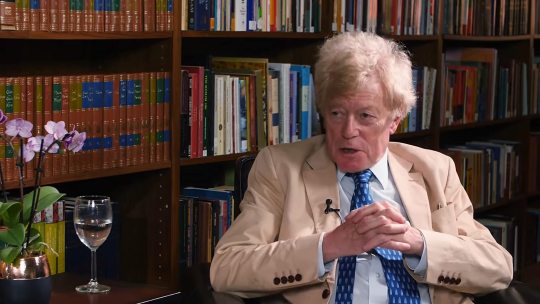
The good part of the second part is Scruton trying to make a case for the cultural uniqueness of wine. In one sense, Scruton is right to do this: it is undeniable in many parts of western culture, wine has played a unique role in religious and social rituals, which no other drink has. But he can push his point beyond plausibility when he attempts to argue that because of the qualities of wine itself – and what it is to drink it properly – nothing else could play this role (more on this later).
The argument starts well, with a very illuminating discussion of the distinction between the various ways in which a substance can intoxicate. There are those that merely stimulate without altering the mind (like tobacco, for example). Then there are those which have mind-altering effects, but whose consumption itself brings no plea- sure (e.g. heroin). The third category contains those things which alter your mind and bring pleasure in their consumption: cannabis and forms of alcohol other than wine are his examples. Wine, Scruton argues, is in a fourth category of its own: here the alteration of the mind is internally related to the experience of consuming it.
These distinctions are very useful, and the distinction between the third and the fourth category is subtle but certainly real. It relates to the question of what non-human animals can and cannot do. Scruton makes the nice observation that an animal cannot savour wine (or any- thing else). In being able to savour or relish the taste of wine, a person no more separates out the effect of the wine from its taste than they can separate the meaning of a piece of music from its sound. Although one would not realise this from reading the thousands of words that are written daily about wine, wine would not be the drink it is if it did not intoxicate.

The last two chapters deal respectively with wine and whine, and being and bingeing. Though Scruton has something to say in favour of Puritanism, he castigates the ease with which “puritan outrage [and in particular, prohibition, but also sexual behaviour] can be displaced from one topic to another, and the equal ease with which the thing formerly disapproved of can be overnight exonerated from all taint of sin.”
He vehemently protests against “the humourless mullahs,” and the misuse of drinking, but also rejects the idea that fermented drinks are just shots of alcohol, and insists on their social functions across civilisations and time: “The burden of my arguments is that we can defend the drinking of wine, only if we see that it is a culture, and that this culture has a social, outward-going, other-regarding meaning. . . When people sit down together sipping drinks, they rehearse in their souls the original act of settlement, the act that set our species on the path of civilisation, and which endowed us with the order of neighbourhood and the rule of law.” But he has not much against drinking alone, and ends with a few words from the Chinese poet Li Po (700 BC), the same poet whom Mahler used in his Lied von der Erde (though in a very approximate translation):
A cup of wine, under the flowering trees;
I drink alone, for no friend is near.
Raising my cup I beckon the bright moon,
For he, with my shadow, will make three men.
Scruton points out in several brilliant passages, the prohibitionist, like the modern day Islamists and moral police in the West and the all too familiar binge-drinker are alike in their ignorance of the virtue of “temperance.” They can envisage no stopping place between abstention and alcoholism. Their absolutist logic, he argues, is like objecting to a first kiss on the grounds that it will one day lead to a divorce. And neither can really understand drinking for any reason other than to get drunk.

Scruton confirms the wider value of temperance in our lives: “Virtue should be cast in human form if it is to be humanly achievable. Saints, monks, and dervishes may practice total abstinence; but to believe that abstinence is the only way to virtue is to condemn the rest of mankind. Better to propose the way of moderation, and live thereby on friendly terms with your species.”
As it happens, the occasional bender may actually have therapeutic qualities in moderation (i.e., if indulged in infrequently). George Orwell, who can hardly be accused of lacking a puritanical streak, thought that people should get drunk every six months or so. The experience, he thought, shook one out of one’s regular complacency and could be compared in this to a weekend abroad. Certainly it very often produces a feeling of greater humility in those who can remember what happened. Yet getting drunk is something that most drinkers do very rarely, if at all.
Changing our mood and outlook is a very different matter. Under the influence of a moderate amount of alcohol, our inhibitions are loosened. Shy people become bold, the tongue-tied talkative, the dull lively, the unimaginative fanciful, and the isolated social. (Even “mean drunks” usually start the evening in festive and forgiving mood.)
That last loss of inhibition is the most important because it promotes the fellowship that is the basis of a decent society. Not all intoxicants perform this vital function. Cannabis and similar drugs tend, if anything, to imprison the taker within his own consciousness (however expanded it may seem to him in his dreams). Except for those who lose themselves in alcoholism (and consequently become asocial in their attempts to deceive others about their condition), however, alcohol is a profoundly social drug. At the same time, not all varieties of alcohol are equally social in their effect. This thought leads Scruton to narrow somewhat the scope of his enthusiasm. Having rejected teetotalism, he continues: “The real question, I suggest, is not whether intoxicants, but which. And - while all intoxicants disguise things - some (wine preeminently) also help us to confront them by presenting them in re-imagined and idealised forms.”

Scruton makes a fascinating and intriguing point related to our historical relationship with the vine to make wine the highest ideal form. He claims that wine derives from a crucial historical transition in our relation to the earth – when human beings settled, put down roots and stopped being mere hunter-gatherers. In a memorable phrase, Scruton claims that in this way wine celebrates ‘the earth itself, as the willing accomplice in our bid to stay put.’ But of course one could say similar things about distilled spirits and beer. Such drinks are not made in such an incredible variety as wine is, but Scruton’s point is not about variety but about the intrinsic and relational qualities of the drink itself.
In the end, one cannot help feeling that he is relying a little too much on the sheer panache of his writing to help his argument bounce along: ‘Wine is not simply a shot of alcohol, or a mixed drink. It is a transformation of the grape. The transformation of the soul under its influence is merely the continuation of another transformation that began maybe fifty years earlier when the grape was first plucked from the vine.’ Wine is a transformation of the grape, to be sure. And the mind or soul is transformed in its consumption. But these two transformations are so very different that it is hard to see what can literally be meant by the one being the continuation of the other.
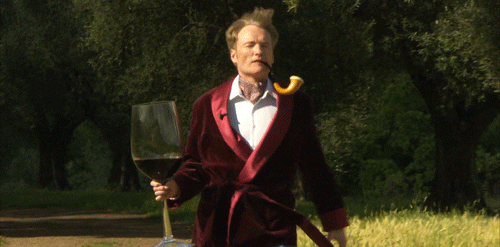
In fact, Scruton’s view is not just that wine is unique as a stimulant, but that it has to be drunk in a particular way in order for the harmony of taste and intoxication to take hold. It is not hard to agree with Scruton’s argument that there are more or less civilised ways of drinking wine. And this part of his thesis is very plausible: ‘The burden of my argument is ... that we can defend the drinking of wine, only if we see that it is part of a culture, and that this culture has a social outward-going, other-regarding meaning. The new uses of wine point towards excess and addiction: they are moving away from the old way of drinking, in which wine was relished and savoured, to the form of drinking typified by Marmeladov, who clutches his bottle in a condition of need.’
However I still found all this a tad unconvincing in that he makes a case that only the savouring and relishing of wine can play a central cultural role as opposed to other spirits - think of Scotch whisky for the Scots and beer for much of Northern Europe or even tea(!) for the English. So my apologies to Roger Scruton but I remain sceptical of his argument that of all stimulants, wine is uniquely civilising, however much I want it to be true.
I think Scruton is also wrong to despise cocktails. A well-made cocktail is as complex a set of taste experiences as a good Bordeaux. A good-strength cocktail is the perfect prelude to the theatre, giving one exactly the right lift to help the play to entertain, but not suppressing one’s appetite long enough to spoil a post-theatre dinner. It can be the booster rocket that starts a convivial evening. But the cocktail has its limits. The alcoholic strength of most cocktails reduces their usefulness both as an aid to sustained fruitful conviviality and to the kind of imaginative introspection that Scruton thinks necessary for a happy life.

That aside, Scruton knows that the best (including Li Po’s poetry) should be kept for the very end. The bouquet (of the wine, but in French the word is also used for the finishing of a firework) comes with the Appendix: What to drink with what, though here the second what does not stand for food, but for philosophers. This part of the book I very nearly coughed up my wine as I found it terribly amusing to pair a suitable wine, as one would with food, to a philosopher one might be reading.
St Augustine: Drink a glass of Moroccan Cabernet Sauvignon, though “the City of God requires many sittings, and I regard it as one of the rare occasions when a drinking person might have legitimate recourse to a glass of lager [which I did in Odessa, while reading Scruton], putting the book to one side just as soon as the glass is finished” [which I did not do, since I had three glasses, each of which containing half a liter].
Francis Bacon: “Any discussion of his insights should, I think, proceed by the comparative method. I suggest opening six bottles of a single varietal—say Cabernet Franc- one from the Loire, one from California, one from Moravia, one from Hungary, and if you can find two other places where it is grown successfully you will already have given some proof of the inductive method—and then pretending to compare and contrast, taking notes in winespeak, while downing the lot.”
René Descartes: “As the thinker who came nearest, prior to the Monty Python, to stumbling on the title of [my] book, Descartes deserves a little recognition. . . He has ended up as the most overrated philosopher in history, famous for arguments that begin from nothing and go nowhere. I would suggest a deep dark Rhône wine [that] will compensate for the thinness of the Meditations.”
Baruch Spinoza: “The last time that I understood what Spinoza meant by an attribute it was with a glass of red Mercurey, Les Nauges 1999. Unfortunately, I took another glass before writing down my thoughts and have never been able to retrieve them.”
Immanuel Kant: “And when it comes to [his] Critique of the Judgment, I find myself trying out [several wines], without getting any close to Kant’s proof that the judgment is universal but subjective, or his derivation of the ‘antinomy of taste’— surely one of his most profound and troubling paradoxes, and one that must yield to the argument contained in wine if it yields to anything.”
Friedrich Nietzsche: “Although we should drink to the author of The Birth of the Tragedy, therefore, it should be with a thin, hypochondriac potion, maybe a finger of Beaujolais in a glass topped up with soda-water.”
Edmund Husserl: “I recommend three glasses of slivovitz from Husserl’s native Moravia, one to give courage, one to swallow down the jargon, and one to pour over the page.”
Jean-Paul Sartre: “Sartre’s great work of philosophy, L’être et le néant, introduces the Nothingness that haunts all that he wrote and said. . . If ever I were to read Sartre again, I would look for a 1964 Burgundy to wash the poison down. Small chance of finding one, however, so there is one great writer whom I shall never again revisit—and I thank God for it.”
Martin Heidegger: “What potion to complement the philosopher who told us that ‘nothing noths’? To raise an empty glass to one’s lips, and to feel it as it travels down—noth, noth, noth, the whole length of the tube: this surely is an experience to delight the real connoisseur.”

In conclusion I really enjoyed reading this book (again and again).
This is a wonderful book for anyone who loves wine and wants to try identify what, in all its complex connections with so much of what is valuable in civilisation, might be special about drinking it. I think he does a wonderful job in looking at the philosophical and religious questions related to wine, from the Koranic injunction against alcohol to the true nature of temperance. These questions take us far from the vineyard at times, making excursions into terroir as different as Wagnerian music dramas and the philosophical nature of smells. His arguments as well as his beautiful prose are fresh, original, teasingly provocative, but also joyous.
This book is only about 224 pages but fun to read either in one sitting or dipping in and out at pleasurable intervals.
There are pages of useful advice on what wine to buy that are also glimpses into what to look for in the wine. I think his recommendations are good ones even if he leans too heavily into French wines. As someone who co-owns a vineyard I can say with reasonable confidence that I know my French wines but also wine from South Africa but confess my ignorance of wines from the new world such as California or Chilean wines. But I see that as an opportunity to discover rather than stay in my comfort zone. Here Scruton gently prods you along to do just that.

As an aside Scruton, who never shies away from his staunchly conservative Tory beliefs, perhaps forget to mention one juicy vignette in that Karl Marx’s political and philosophical ideas were probably inspired by wine. Indeed Karl Marx’s family were the happy owners of a vineyard in Trier, a small affluent Rhineland city, on the rolling hills of the Mosel River Valley. The family sold it due to hard times. Then as now these vineyards of the Mosel Valley remain mostly small-scale, are still known for their fruity white wines, and especially their lemony Rieslings and agrotourism. It seems the politics of wine (tariffs and import taxes) played a larger role in the history of leftist thought than their quaint appearance might suggest. In the early 1840s, the economic struggles of these very vineyards inspired Marx to criticise the draconian Prussian government - and in the process, some historians argue, begin developing the theory of historical materialism for which he is best known. In fact there is a delightful book I can recommend written by Jens Baumeister called, ‘How Wine Made Karl Marx a Communist’ (2018) if anyone is interested in reading more about that.

Of course it’s always hard to know how seriously one is supposed to take Scruton in some of his more extravagant comments in the book, like many things he says in his other books: ‘you could say that wine is probably as old as civilisation; I prefer to say that it is civilisation, and that the distinction between civilised and uncivilised countries is the distinction between the places where it is drunk and the places where it isn’t.’ His desire to outrage and court controversy rises to the surface, and can result in some of the funniest moments in the book. But as with everything he writes, some of Scruton’s claims must be taken with a pinch of salt or more appropriately, with a glass of claret.
Indeed I prefer to picture his words as if he was one’s old and familiar drinking companion sitting on weather beaten leather chairs and making provocative but teasingly good natured remarks out of a desire to amuse rather than to be boorish or loutish. Indeed this book is best enjoyed with a glass of wine on hand whilst sitting on a comfy old worn out leather chair curled next to log burning fire as the light dims outside.

I would whole heartedly agree with Roger Scruton that wine is a “drink that causes you to smile at the world and the world to smile at you.” Instead of imprisoning you inside a solitary introspection, it takes you out of yourself - and your ideas with you - to mingle with others and their ideas. Wine is therefore a voyage of discovery - and rediscovery - in many senses. And for this I can happily raise my own glass and say amen to that.
But what glass of wine would I raise when reading Scruton’s own book?
Well, one bottle won’t do. So temperance is out of the window then - sorry Roger. You will need a good French Sauternes or Barsac (preferably 2014) with the nostalgic autobiography, a finely bodied Bordeaux wine (I would go with a more complex wine from Saint Emilion) with the philosophy section of the book, and a champagne (of course) to drink with the philosophical jokes towards the end of the book.

Oh go on then, finish off with a tipple of Cognac before bed time, I am sure Scruton wouldn’t begrudge anyone that pleasure.
#treat your s(h)elf#books#book#review#book review#reading#roger scruton#scruton#wine#drinking#society#culture#civilisation#history#philosophy#ideas#marx#toryism#tory#conservativism
55 notes
·
View notes
Text
History of top 5 Best Football (Soccer) Players of All Time
The imagination and cleverness that typify the stunning round of football (soccer) would convey it a masterpiece notwithstanding the genuine setting inside which the game is played. What perceives football from most different games is the chance of verbalization surrendered to the players. While baseball players and cricketers are limited to unequivocal turns of events, footballers may shoot, pass, tackle or spill the ball in a combination of ways, allowing the most proficient players to show up at the real apex of the game. ประวัตินักบอล

Just Retired Players Were Considered for This List
This overview avoids at present powerful stars like Lionel Messi and Ronaldo. They can be fittingly condemned once their jobs are done. The summary joins surrendered players from the entire recorded history of the bleeding edge game.
I have included YouTube recordings to highlight the capacities of the players recorded. The Zidane and Diego Maradona recordings are endorsed for novices to the game who wish to see a display of the imaginative splendor of the exquisite game.
1. George Best, Northern Ireland
George Best's job was tortured by drink issues, at this point his capacity was for all intents and purposes unequaled. Famous for his spilling limits, he won the 1968 European Cup and two union titles during his involvement in Manchester United. As an attacking midfielder, he scored a groundbreaking 205 targets in 579 matches and overwhelmed the Ballon d'Or in 1968. As Northern Ireland has never been a force in overall football, he never affected that stage. At 28 years of age, his alcohol addiction sent his calling into snappy rot, and he never cultivated whatever amount of his capacity ensured.
2. Zinedine Zidane, France
Zidane's characteristics are his individual mastery, ball control, genuine strength, and passing. His best displays were routinely in the most indisputable games, showing a character not found in various different competitors. As a central midfielder, he scored 159 destinations in 789 games. With France, he won the 1998 World Cup and the 2000 European Championships. With Juventus and Real Madrid, he won three class titles and one European Cup. In the wake of leaving, Zidane conveyed his insight to football the load up, directing Real Madrid to three successive European Cups.
3. Alfredo Di Stéfano, Argentina
The first forward on the once-over should be Alfredo Di Stéfano. With 511 targets in 702 games, he was a beneficial goalscorer for Real Madrid. He wasn't your standard striker, nonetheless; he appeared wherever on the pitch, dealing with, passing, and directing the play. He was the most complete player anytime to tastefulness the game.
With Real Madrid, he won a stunning five European Cups, scoring taking everything together of the finals. He won 13 affiliation titles in his employment (1945–1966). His worldwide record is poor in light of not including in a World Cup, in spite of the way that he won a Copa America with Argentina.
4. Ferenc Puskás, Hungary
Ferenc Puskás was apparently the most precise goalscorer ever. Merging his finishing capacity with general information and ability to make new capacities, (for instance, the drag-back), he scored a hair-bringing 700 destinations up in 705 appearances during his employment (1943–1966). For Real Madrid, he won three European Cups and five affiliation titles. In Hungary, he won a further five affiliation titles. At the worldwide level, he drove Hungary to the 1954 World Cup Final.
5. Franz Beckenbauer, Germany
Franz Beckenbauer was a sweeper (a ball-playing defender who added to attacks) anyway that didn't keep him from scoring 111 destinations in 776 appearances for Germany and Bayern Munich. Like Di Stéfano, he never had an authentic circumstance on the pitch; he was from a genuine perspective any place immediately, directing the game, applying his effect, and "clearing up" opposition attacks that traversed the mindful line.
Beckenbauer was an authoritative leader, notwithstanding, got together with his spilling, passing, and all-around particular limit, he was maybe the best player ever. He won the 1974 World Cup and the 1972 European Championships, just as three European Cups and eight coalition titles during his club calling.
1 note
·
View note
Text
Leçons sur l’histoire de l’Algérie française.
Je n’ai pas eu le temps d’aller au bout de l’histoire française en Algérie. Le travail de synthèse était enrichissant mais fastidieux.
J’en retiens des enseignements qui m’ont marqué.
L’échec de la démocratie
D’abord les limites de la démocratie. L’Etat a envoyé des milliers de Français rejoindre les terres algériennes, tantôt pour évincer des partisans politiques gênants tantôt pour dégager les exclus de la révolution industrielle. Ces colons se sont retrouvés dans une situation intenable: une infime minorité française détenant le pouvoir politique et économique au dépend d’une immense majorité locale. Motivée par une peure naturelle, ce sont sous des régimes démocratiques que la France a pris les pires décisions pour l’Algérie française. Les seules personnes qui ont réussi à diminuer la domination des colons sur les berbères sont l’empereur Napoléon III et le général De Gaulle puisqu’ils étaient les deux seuls à ne pas dépendre d’un vote pour prendre des décisions. D’autres ont essayés, en vain, puisqu’ils ont été systématiquement broyés par le jeu démocratique. C’est troublant pour moi de voir les limites de notre démocratie tant adulée.
Qui, en effet, depuis trente ans, a naufragé tous les projets de réforme, sinon le Parlement élu par les Français?
Chroniques algériennes, A. Camus
deux termes suffisent pour désigner des gens qui en 1954 allaient s’affronter: ceux de minoritaires et de majoritaires: des “minoritaires” craignant pour leur privilège puis pour leur vie, des “majoritaires” frustrés, dont le nombre et la misère doublaient à chaque génération… Deux bombes, côte à côte
Germaine Tillion, Fragments de vie
Deux Histoires et la difficulté du changement d’équilibre
Ensuite je suis marqué par la dichotomie et la déformation de l’histoire racontée sur les territoires algériens et français. Deux histoires au service de leur mythe pour flatter la fierté nationale.
Le musée du moudjahid à Alger m’a frappé pour la version algérienne: des maquettes à échelle réelle qui montrent des scènes de torture d’Algériens par l’armée française et les actes héroïques du FLN pour délivrer ce peuple des mains des Français sanguinaires. Un musée qui concentre tout l’horreur de l’armée Française en une seule histoire, au service du mythe fondateur du FLN. Il n’est pas facile de renouer des liens en cultivant cette unique histoire de guerre.
De l’autre côté de la Méditerranée, à l’école, on m’avait défendu quelques bienfaits de la colonisation comme celui de l’acte “civilisateur”.
La France de Jules Ferry avait bien la volonté de financer des écoles, mais les élus d’Algérie ont tout fait pour éviter de former les algériens musulmans, soit en utilisant différemment l’argent, soit en construisant des écoles fastueuses, comme le dénonce Albert Camus, pour limiter le nombre de places pour les étudiants indigènes. A juste titre, ils avaient peur de former les futurs insurgés. En 1945, 115 ans après la prise d’Alger, seulement 11% des enfants musulmans sont scolarisés et 96% de la population berbère est toujours illettrée en langue française.
La France a aussi amené le monde “moderne” a des peuples tribaux. Cet apport a fait effondrer les équilibres en place qui a considérablement appauvri le pays. Deux exemples:
Les femmes n’avaient pas le choix que de marier un cousin? Oui, mais elles étaient ainsi protégées par la famille. Avec l’éclatement soudain des tribus, Germaine Tillion témoigne de la “clauchadirsation” des femmes victimes de violence et contraintes à se cacher.
Le taux de mortalité infantile était élevée? Oui, mais l’apport soudain des médicaments et des vaccins n’a pas entraîné de changement dans les mesures contraceptives. L’explosion démographique a provoqué plusieurs famines tuant des milliers d’Algériens.
En bouleversant trop rapidement les règles ancestrales du pays, la France a fait effondrer les équilibres en place: les métiers, les propriétés, les héritages, le commerce, etc… L’appauvrissement et la “clauchardisation” des berbères est dénoncée par l’Etat français lui même quand il tente de recruter des troupes en 1921:
L’indigène est atteint de tares multiples. Il est sous-alimenté. Le recrutement de 1921, sur 60 000 jeunes appelés, n’a pu en retenir que 12000.
Jugement de l’inspecteur général de l’hygiène
A vouloir garder le pouvoir à tout prix entre les mains des Français, la France a interdit aux Berbères de vivre dignement sur leurs propres terres. Cette obstination a détruit tout espoir de garder des liens d’amour et d’amitié entre les deux pays voisins. Notre seul devoir était de construire les bases d’une amitié inaltérable, au lieu de cela nous en avons fait un ennemi la rage au coeur.
D’un côté on ressasse en boucle l'hystérie de la guerre, de l’autre côté on ignore tout. Conciliation impossible?
la solidarité française et arabe est inévitable, dans la mort comme dans la vie, dans la destruction comme dans l’espoir. La face affreuse de cette solidarité apparait dans la dialectique infernale qui veut que ce qui tue les uns tue les autres aussi, chacun rejetant la faute sur l’autre, et justifiant ses violence par la violence de l’adversaire. L’éternelle querelle du premier responsable perd alors son sens. Et pour navoir pas su vivre ensemble, deux populations, à la fois semblables et différentes, mais également respectables, se condamnent à mourir ensemble, la rage au coeur.
A. Camus
Vous l’avez très bien dit, mieux que je ne le dirai : nous sommes condamnés à vivre ensemble. Les Français d’Algérie, dont je vous remercie d’avoir rappelé qu’ils n’étaient pas tous des possédants assoiffés de sang, sont en Algérie depuis plus d’un siècle et ils sont plus d’un million. [...] Le « fait français » ne peut être éliminé en Algérie et le rêve d’une disparition subite de la France est puéril. Mais, inversement, il n’y a pas de raisons non plus pour que neuf millions d’Arabes vivent sur leur terre comme des hommes oubliés : le rêve d’une masse arabe annulée à jamais, silencieuse et asservie, est lui aussi délirant. Les Français sont attachés sur la terre d’Algérie par des racines trop anciennes et trop vivaces pour qu’on puisse penser les en arracher. Mais cela ne leur donne pas le droit, selon moi, de couper les racines de la culture et de la vie arabes. J’ai défendu toute ma vie (et vous le savez, cela m’a coûté d’être exilé de mon pays) l‘idée qu’il fallait chez nous de vastes et profondes réformes. On ne l’a pas cru, on a poursuivi le rêve de la puissance qui se croit toujours éternelle et oublie que l��histoire marche toujours et ces réformes, il les faut plus que jamais. Celles que vous indiquez représentent en tout cas un premier effort, indispensable, à entreprendre sans tarder, à la seule condition qu’on ne le rende pas impossible en le noyant d’avance dans le sang français ou dans le sang arabe.
Mais dire cela aujourd’hui, je le sais par expérience, c’est se porter dans le « no man’s land » entre deux armées, et prêcher au milieu des balles que la guerre est une duperie et que le sang, s’il fait parfois avancer l’histoire, la fait avancer vers plus de barbarie et de misère encore. Celui qui, de tout son cœur, de toute sa peine, ose crier ceci, que peut-il espérer entendre en réponse, sinon les rires et le fracas multiplié des armes ? Et pourtant, il faut le crier et puisque vous vous proposez de le faire, je ne puis vous laisser entreprendre cette action folle et nécessaire sans vous dire ma solidarité fraternelle.
lettre d'Albert Camus à M. Kessous, publiée en 1955.
La sagesse est un chemin de crête, la voie étroite entre deux précipices, entre deux conceptions extremes. En matière d’immigration, la première de ces conceptions extremes est celle qui considère comme le pays d’accueil comme une page blanche où chacun pourrait écrire ce qu’il lui plait, ou, pire, comme un terrain vague où chacun pourrait s’installer avec armes et bagages, sans rien changer à ses gestes ni à ses habitudes. L’autre conception extrême est celle qui considère le pays d’accueil comme une page déjà écrite et imprimée, comme une terre dont les lois, les valeurs, les croyances, les caractéristiques culturelles et humaines auraient déjà été fixées une fois pour toutes, les immigrants n’ayant plus qu’à s’y conformer.
Amin Maalouf, Les identités meurtrières
1 note
·
View note
Text
There's a good little section in the 2nd Chapter of David Bellos's 'Is That a Fish in Your Ear?' that I might recommend.
It doesn't quite answer your question, rather it attempts to tackle an adjacent question which is that of how English came to be the dominant language of science, but I figure it might be of interest anyway.
Linguistic unification of the same order of magnitude has taken place in the last fifty years in most branches of science. Many languages have served at different times as vehicles of scientific advance: Chinese, Sanskrit, Greek, Syriac, Latin, and Arabic from ancient times to the Middle Ages; then Italian and French in the European Renaissance and early modern period. In the eighteenth century, the advances made by Linnaeus in the description and classification of botanical species, as well as Berzelius’s research in chemistry, made Swedish a language of science, and for about a hundred years it kept a respected place. English and French continued to be used for numerous disciplines, but German burst onto the scene in the nineteenth century with the new chemistry invented by Liebig and others; and Dmitri Mendeleyev, who created the periodic table of elements, helped to put Russian among the international languages of science before the end of the nineteenth century. Between 1900 and 1940, new scientific research continued to be published, often in intense rivalry, in Russian, French, German, and English (Swedish having dropped off the map by then). But the Nazis’ abuse of science between 1933 and 1945 discredited the language they used. German began to lose its status as a world science language with the fall of Berlin in 1945—and many leading German scientists were of course whisked off to America and Britain in short order and functioned thereafter as English speakers. French entered a slow decline, and Russian, which expanded in use after the Second World War and continued to be cultivated for political reasons during the remaining years of the U.S.S.R., dropped out of the science scene in 1989. So we are left with English. English is the language of science worldwide; learned journals published in Tokyo, Beijing, Moscow, Berlin, and Paris are now either entirely in English or else carry English translations alongside foreign-language texts. Academic advancement everywhere is dependent on publication in English.
Despite this, efforts are being made to allow some languages to serve once again as local science dialects. A U.S.-government-sponsored Web service, for example, WorldWideScience.org, now offers searches of non-English-language databases in China, Russia, France, and some South American countries together with automatic retranslation of the results into Chinese, French, German, Japanese, Korean, Portuguese, Spanish, and Russian. The asymmetry of sources and targets in this new arrangement gives an interesting map of where science is now done.
The reasons for English having made a clean sweep of the sciences are not straightforward. Among them we cannot possibly include the unfortunate but widespread idea that English is simpler than other languages. However, you can’t explain the history and present state of the language of science as the direct result of economic and military might, either. In three instances, languages became science vehicles because the work of a single individual made advances that could not be ignored anywhere else in the world (Liebig for German, Berzelius for Swedish, Mendeleyev for Russian). One language lost its role because of the political folly of its users (German). What we seem to have experienced is not a process of language imposition but of language elimination, in a context where the scientific community needs a means of global communication among its members. The survivor language, English, is not necessarily the best suited to the job; it’s just that nothing has yet happened to knock it out. One result of the spread of English is that most of the English now spoken and written in the world comes from people who do not possess it natively, making “English speakers” a minority among the users of the language. Much of the English now written by natural and social scientists whose native language is other is almost impenetrable to nonspecialist readers who believe that because they are native English speakers they should be able to understand whatever is written in English. So clumsy and “deviant” is international scientific English that even nonnative wits can have fun with it:
"Recent observations by Unsofort & Tchetera pointing out that 'the more you throw tomatoes on Sopranoes, the more they yell' and comparative studies dealing with the gasp-reaction (Otis & Pifre, 1964), hiccup (Carpentier & Fialip, 1964), cat purring (Remmers & Gautier, 1972), HM reflex (Vincent et al., 1976), ventriloquy (McCulloch et al., 1964), shriek, scream, shrill and other hysterical reactions (Sturm & Drang, 1973) provoked by tomato as well as cabbages, apples, cream tarts, shoes, buts and anvil throwing (Harvar & Mercy, 1973) have led to the steady assumption of a positive feedback organization of the YR based upon a semilinear quadristable multiswitching interdigitation of neuronal sub-networks functioning en desordre (Beulott et al., 1974)."
Pastiche and parody notwithstanding, international scientific English serves an important purpose—and it would barely exist if it did not serve well enough the purposes for which it is used. It is, in a sense, an escape from translation (even if in many of its uses it is already translated from the writer’s native tongue).
0 notes
Text
The War of Independence began in August 1776, because the power gap between the two sides lasted for eight years.
Westward Movement and North-South Conflict
slightly
Outbreak of Civil War
In 1860, the Republican candidate Lincoln became president.
In May 1862, Lincoln promulgated the "Homestead Law", allowing farmers who have cultivated land in the west for 5 years to obtain the right to use 160 acres of land after paying a certificate fee of $10, so that the majority of farmers in the west can stand on the side of the abolitionists. , Isolated the Southern League. On January 1, 1863, the "Emancipation Proclamation" promulgated by Lincoln took effect. The black slaves in the rebellious states were regarded as free men and were allowed to join the army. In a short period of time, 186,000 blacks joined the federal army.
The Civil War ended with the Confederate victory. April 14, 1865; Lincoln was assassinated, Vice President Johnson succeeded as President. The reconstruction period began.
The Industrial Revolution
In the early 19th century, the United States began to industrialize, but after the Civil War, it entered a mature stage.
World War I
After the beginning of the First World War, the United States declared neutrality, provided arms to the warring parties, and soon loaned to the Allies. In 1916, Wilson was re-elected. In 1917, the United States declared war on Germany on April 6 after a German submarine sank an American ship.
In November 1918, Wilson signed an armistice agreement with Germany. The First World War promoted the economic prosperity of the United States.
However, due to the abnormal development of domestic new industries and overproduction, the proportions of various sectors of the national economy were severely imbalanced, production and consumption were out of line, and agriculture was in a chronic crisis for a long time. The global economic crisis.
The Great Depression
The Great Depression was an unprecedentedly severe economic crisis in the history of the United States. The Great Depression not only affected the United States, but also affected countries in the world. The panic caused millions of workers to lose their jobs, a large number of farmers were forced to abandon their arable land, factories and shops were closed, banks closed down, and there was depression.
World War II
In September 1939, Germany attacked Poland, and the Second World War broke out.
On January 1, 1942, 26 countries including the United States, Britain, the Soviet Union, and China signed the Declaration of the United Nations. In August, the British and American forces landed in North Africa. The victory of the Battle of Stalingrad in February 1943 caused a fundamental change in the situation of the European Anti-Fascist War.
In November 1943, Roosevelt, Churchill, and Stalin held the Tehran Conference. In June 1944, the coalition forces of Britain, the United States and other countries landed in Normandy, France, opening up the second battlefield in Europe. On April 12, 1945, Roosevelt passed away and Truman succeeded as president. In May, Germany announced its unconditional surrender. In July, the heads of the United States, Britain and the Soviet Union held the Potsdam Conference. The United States and Britain reached an agreement with the Soviet Union on handling issues such as Germany and Poland. The United States, Britain and China issued the Potsdam Announcement, demanding that Japan surrender unconditionally. The United States and the Soviet Union reached a consensus on the Soviet military's operations against Japan. On August 6, the US military dropped the first atomic bomb on Hiroshima. On August 8, the Soviet Union declared war against Japan. On the 9th, the US military dropped a second atomic bomb on Nagasaki. Japan surrendered and the Second World War ended.
Cold war period
After the Second World War, with the defeat of the Axis powers and the decline in the strength of Britain and France, the United States and the Soviet Union became superpowers, and the world was divided into two camps, the East and the West. The United States and the Soviet Union and their respective camps stepped up their preparations in military, political, economic, and propaganda, just as they did during the war. This state is called the "cold war."
Black civil rights movement and slow economic development
Since 1960, many aspects of American history are still the continuation of post-war development.
During the Second World War and the Korean War, the apartheid system was abolished in the army due to the participation of blacks in combat. This fact promoted the struggle of domestic blacks for civil rights.
In December 1955, blacks in Montgomery, Alabama, under the leadership of Martin Luther King, carried out a 381-day campaign to boycott segregation in riding. The blacks also launched sit-ins in restaurants to protest this. In terms of apartheid, the civil rights movement flourished.
In the 1960s, due to the unpopular Vietnam War, the domestic society was turbulent. In 1961, black and white citizens jointly launched the "Free Passenger" movement. In April 1963, Martin Luther King launched a large-scale march, petition, sit-in and demonstration in Birmingham. In August, 250,000 blacks and whites joined forces for Protesting against racial discrimination, a demonstration on the march to Washington was held, and Martin Luther King gave the speech "I have a dream". Driven by the black civil rights movement, Congress passed the Civil Rights Law in June 1964.
Normalization of Sino-U.S. relations
After Nixon came to power in 1969, the United States was stuck in the quagmire of the Vietnam War. The recurrent fiscal deficits and huge military expenditures aggravated inflation and were in a difficult situation both at home and abroad. Since 1969, Nixon has adopted "partnership, strength and negotiation" as a new strategy of US foreign policy. The Communiqué on the Establishment of Diplomatic Relations between China and the United States came into effect on January 1, 1979, realizing the normalization of relations between the two countries. With regard to US-Soviet relations, after Nixon proposed a new "peace" strategy, the two countries have strengthened dialogue.
War on terror
The "September 11 Incidents" that occurred in New York and Washington in 2001 had a huge impact on the United States and the world. This incident is by far the most serious terrorist attack in human history. This incident prompted the US foreign policy to deal with the threat of terrorism as one of the focal points. The U.S. government started the war on terrorism and its operations-the war in Afghanistan. After overthrowing the Taliban regime in Afghanistan in October 2001, the Afghan interim government was established in December of that year; it also launched the Iraq War in 2003 to overthrow Saddam’s regime. Establish an interim government in Iraq.
0 notes
Text
Macron et la réforme de l’ENA : Tout changer pour que rien ne change, mais en pire.

Paru dans
Que l’ENA soit l’objet d’une détestation générale répond à sa fonction bien naturelle de bouc émissaire, que le gouvernement utilise pour redorer son image. Annoncer des mesures populaires comme la suppression de l‘affectation directement dans les grands corps de l’Etat à la sortie de l’Ecole peut lui attirer une sympathie facile. En bonne logique, accéder à ces grands corps requiert quelques années d’expérience de terrain avant d’être institué maître et gardien de la Vérité.
Le regretté Bernard Zimmern, ENA, X et entrepreneur, avait créé une promotion virtuelle de membres de l’Inspection générale des finances et d’autres grands corps, la Promotion Titanic, en recensant les pertes qu’ils avaient occasionnées aux entreprises qu’ils ont administrées et les irrégularités de gestion qui ont coûté quelques paquets de millions aux finances publiques. Ces gens sans contact avec la réalité ont agi par idéologie, appliqué des dogmes et non agi par la sagacité du stratège à laquelle rien ne les prépare ni ne les entraîne. Les grands corps ont inventé le « capitalisme des fonctionnaires titulaires », qui ne risquent rien financièrement et ont la garantie de l’emploi, décoration assurée en sus.
Mais la détestation dont l’ENA fait l’objet va plus loin : c’est l’arrogance et la prétention à l’omniscience – que la crise du COVID a mis en relief – dont fait preuve la haute administration, notamment celle de Bercy qui a depuis des décennies réduit le nombre de lits à l’hôpital par soumission aux dogmes européens (ce qui est la vraie cause des mesures de confinement). « En même temps » le système de santé est passé sous la coupe de l’administration avec les ARS, qui, elles, ne sont pas à la diète avec 8600 agents, dont le rôle a été de régenter les hôpitaux durant la crise, bridant toute les initiatives qu’ils prenaient, basées sur un système D des personnels de terrain qui ont porté le nombre de lits de réanimation à 14 000 contre les 5000 en temps normal, comme l’a révélé l’enquête de Jérôme Fourquet.
Plus que du corporatisme et des statuts surprotégés, l’ENA produit un autre fléau, plus grave : le scientisme, cette prétention à une rationalité parfaite, détachée des contingences du réel qui doivent se soumettre à ses dogmes. Et le mal n’est pas que français, c’est celui de l’Occident ! En 1993, le Canadien John Saul publiait un essai retentissant « Les bâtards de Voltaire, la dictature de la raison en Occident », rappelant que ce culte des « gens brillants » a mené à de grandes catastrophes. Depuis quatre siècles, nos "élites rationnelles" ont institué des réformes dans tous les secteurs de la vie sociale, qui ont été responsables de la plupart des difficultés et des violences qu'a connues cette période. Souvenons-nous que Gamelin sortit major de Saint-Cyr et 2° de l’Ecole de guerre, qui, associé au Président Lebrun sorti major de Polytechnique, ont mené la France à l’une de plus épouvantables défaites de son histoire.
La réforme doit commencer par la formation du caractère. Machiavel a mis en avant que pour gouverner il faut être lion et renard. Le lion est majestueux, fort, honnête, mais il a aussi besoin de ruser. Le problème aujourd’hui est que l’ENA fondée en 1945 pour détecter et promouvoir des lions ne forme plus que des renards, moulés dans un même ersatz de pensée centré sur le plan de carrière. Reconstruire l’ENA c’est revenir aux sources : détecter les lions et y soumettre les renards. Et il y a une école pour la formation de renards, c’est Sc Po, qui transmet les codes culturels qui autorisent l’accès à une élite et ce n’est pas la « discrimination positive » qui y changera quelque chose. Sc Po est notre université Evergreen d’où se propagent les dogmes absurdes et tyranniques du « progressisme ».
Dans la Florence de la Renaissance, au temps où y dominait le républicanisme civique, il était demandé aux futurs hauts fonctionnaires d’aller étudier au Studio Fiorentino (qui était, en quelque sorte, l’ENA de Florence) l’art de l’éloquence, qui était considéré comme la base de la vie civique en charge d’insuffler l’amour de la liberté et du Bien commun. Qu’eut été de Gaulle si on avait réduit son œuvre – considérable – à sa politique pour faire renaître la France et l’amener où elle doit être : aux premiers rangs ? De Gaulle n’était rien sans son charisme, sa maîtrise parfaite de la langue et de la culture françaises. Que nous reste-t-il aujourd’hui ? Le charisme tout droit sorti du Chasseur français de M. Castex et le langage automatique d’encéphalogramme plat de Gabriel Attal.
Quand on voit le degré de décrépitude de notre pauvre pays, on peut se poser la question avec les Gilets jaunes et les zélateurs de la démocratie directe « faut-il une élite ?" Ne serait-il finalement pas plus raisonnable de laisser les infirmières gérer les hôpitaux que de subir les ravages des ARS ? ». Les théoriciens de la démocratie directe comme Etienne Chouard voient dans toute technique juridique et budgétaire une arme pour confisquer le pouvoir au profit des experts. Cela est probable sans contrôle populaire sur l’administration. Machiavel, ce grand avocat de la démocratie du grand nombre face à la tyrannie du petit nombre, insistait sur le besoin d’un petit nombre techniquement formé, mais sous contrôle direct du grand nombre. La démocratie directe peut ici avoir son rôle pour évaluer la conduite de l’administration.
La réforme des élites ne viendra pas d’un bricolage administratif de plus destiné à tout changer pour que rien ne change. Elle viendra d’une refonte du cadre culturel des élites. Marc Bloch, tirant les leçons de l’effondrement de 1940 dans l’Etrange défaite, a analysé la défaite de 1940 comme avant tout celle du caractère. Sans caractère, pas de bonne politique possible, quand bien même l’armée française était supérieure sur de nombreux points à l’armée allemande. La réforme commence par l’ouverture du recrutement à des hommes du peuple, de ceux qui ont su démontrer par des actions et leur comportement leur sens du Bien commun et leur amour de la liberté civique. Reprenons les leçons du républicanisme civique de la renaissance pour qui une bonne décision se caractérisait par sa contestabilité effective par le citoyen, naissait de la confrontation d’options émergeant du débat et non de consensus mous inopérants.
Et au-delà, la réforme doit viser le système éducatif, majoritairement devenu une « fabrique du crétin » sauf quelques établissements d’exception où infusent les futures élites, mais qui cultivent de conformisme et l’autosatisfaction. On peut reprendre les propositions de Pierre-Henri d’Argensson d’établir un service militaire pour les élèves de l’ENA, un enseignement de l’intelligence économique pour leur apprendre à défendre l’intérêt national, de même une formation au pilotage des systèmes complexes, qu’ils confondent avec le compliqué engendrant des catastrophes ruineuses dans la conduite de l’informatique de l’Etat.
Elle devra commencer par mettre l’ENA à la diète pendant quelques années, pour une raison simple : On a largement assez de hauts fonctionnaires et les recrutements actuels ont surtout pour objectif de gérer leur démographie, non de répondre à des besoins de services publics. Au moment où la fonction publique de terrain est appelée à se serrer la ceinture, les besoins en cadres peuvent être satisfaits par la promotion interne des attachés principaux d’administration qui sont ceux qui font tourner la machine et qui manquent tragiquement de perspectives et de reconnaissance.
Il s’agira de faire une ENA qui donnent aux lions de notre administration, la phronesis – la sagesse pratique des Grecs qui est celle du chef qui sait analyser et décider en situation - ainsi que la métis – l’art de démêler les situations embrouillées, qui sont le lieu commun des politiques publiques. Une formation de fond de la personne, humaine d’abord, technique et pratique ensuite. Une très vaste culture acquise par la multiplication des expériences de terrain. L’enseignement militaire supérieur y réussit très bien, qui forme d’abord des chefs et des experts ensuite. Le chef débat, consulte, pèse les alternatives et décide seul.
On peut prévoir, sans trop s’enhardir, que le gouvernement va accoucher d’un salmigondis « progressiste », accumulation de gadgets de la novlangue. On parle d’introduire la « pauvreté » dans le programme de l’école. On peut s’attendre à une commission confiée à Esther Duflo qui produira un beau rapport qui connaîtra le même sort que celui sur « la mesure de la croissance » qui fut confié à Joseph Stiglitz par Nicolas Sarkozy. C’est dommage, car la conception de dispositifs durables de sortie de la pauvreté est à l’exact opposé de la culture administrative, qui conçoit tout d’en haut, sans considérer les innovations du terrain. Les grands machins venus d’en haut et imposés par les organisations internationales dans le monde en développement sont d’une inefficacité redoutable et ne font que pérenniser la pauvreté et propager la corruption, alors que les dispositifs partant des initiatives de terrain, tels qui furent lancés au Bangladesh par Muhamad Yunus il y a une trentaine d’années, fonctionnent, car ce sont les pauvres eux-mêmes qui gère ces dispositifs en faisant progresser d’un même pas éducation et sortie par petit pas de la pauvreté.
Oui, il faut des élites vertueuses, c’est un travail de longue haleine pour favoriser l’émergence des lions et tenir à bride serrée les renards.
Claude Rochet
ENA 87, Professeur des Universités
Une disposition de ce type existe à l’article 14 de la Déclaration des droits qui est en préambule de notre constitution, mais qui n’a jamais connu de mise en œuvre concrète.
Pierre-Henri d’Argensson « Pour une vraie réforme de l’ENA… mais pas celle de Macron » FigaroVox 26/4/2019
Read the full article
0 notes
Photo

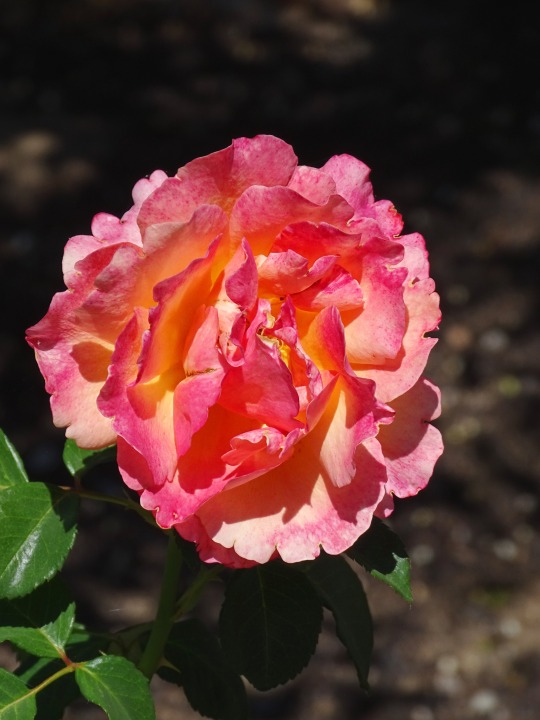

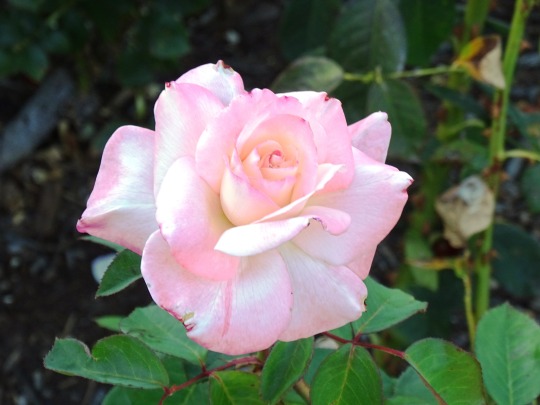
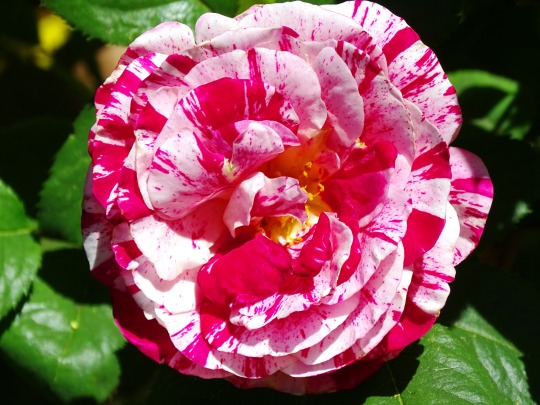
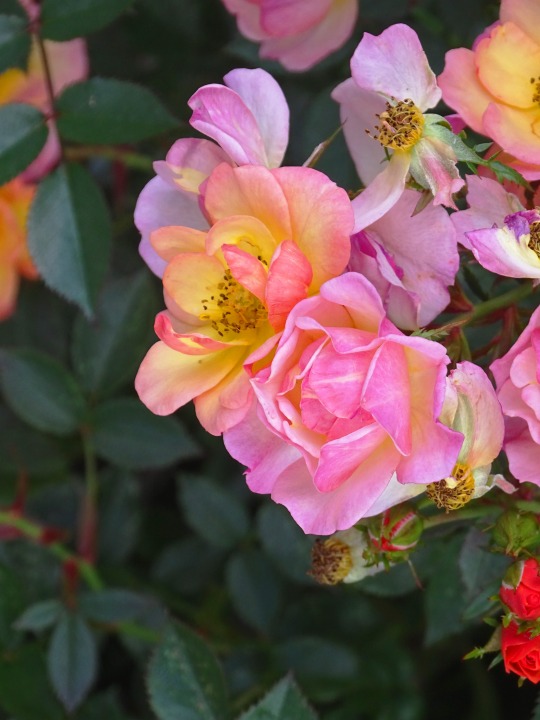
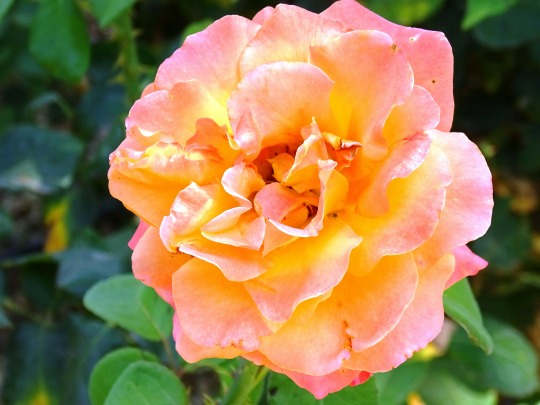

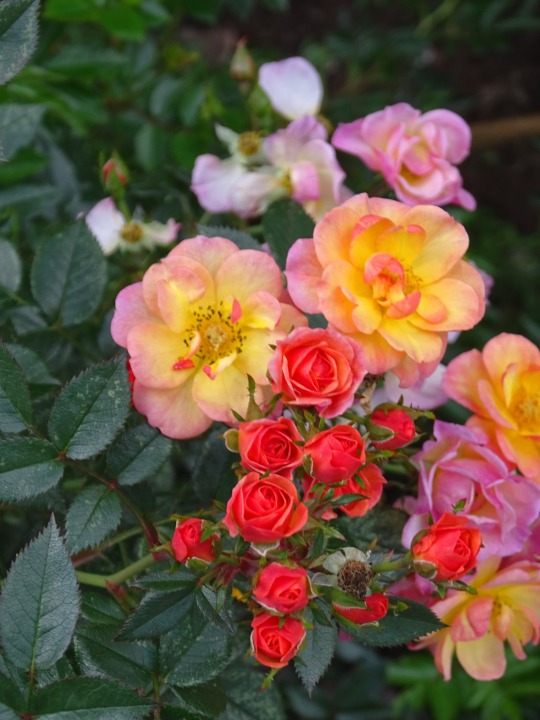
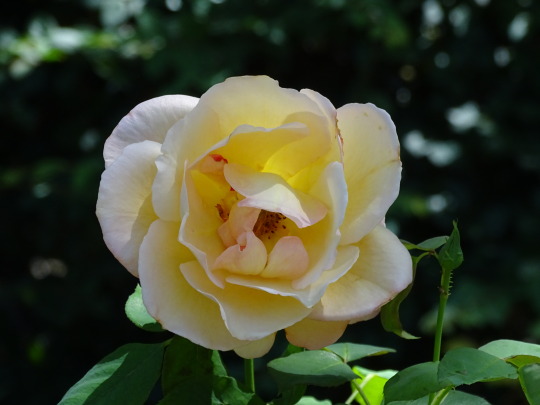
National Peace Rose Day
Known as the most popular rose of the twentieth century, the Peace rose is honored and celebrated today, on the anniversary of the public announcement of its American trade name. On April 29, 1945, the name "Peace" was announced by the Conard Pyle Company in Pasadena, California, at the Pacific Rose Society's first rose show. At the same time, on the other side of the world, the city of Berlin was falling to the Allies, which was one of the final turning points of World War II. The rose came to symbolize the hope that sprouted as the war ended.
Peace roses have larger yellow to cream-colored flowers with slightly crimson-pink petal edges. Factors such as weather and location influence variations on color. They are hybrid tea roses that give forth a fruitlike fragrance. They are durable and vigorous: shrubs may grow up to six-and-a-half feet in height and over four feet in width, they are resistant to disease and can grow until the time of the first frost.
Francis Meilland, a horticulturist and member of a prominent rose-breeding family from Lyon, France, developed the Peace rose between 1935 and 1939. He hybridized the flower in 1935 by crossing a hybridized tea rose known as Margaret McGredy with another seedling. The Peace rose was first known by the number 3-35-40, which meant it was the third hybridization of 1935 and it was the 40th cultivar selected for testing. The plant first produced flowers in the fall of 1936, and Meilland began growing the flowers in his rose fields in 1939.
Soon afterward, as World War II began and as Germany approached France, Meilland sent cuttings of the rose to friends in Turkey, Germany, Italy, and the United States. It may have been sent to the United States on the last plane—or at least one of the last planes—that left the country before the Germans invaded. By one account, the rose was taken out of the country in an American diplomatic pouch.
Meilland named the rose Madame A. Meilland, after his late mother. He introduced it as such to French gardeners in 1942, and this is the formal name that it still holds today. But as it made its way to various countries, it was given many other names. In Italy it became known as Gioia, which means joy; in Germany it became known as Gloria Dei, meaning glory to god; and in Sweden, Norway, and the United States, it became known as Peace.
Robert Pyle of the Conard Pyle Company, which was based in West Grove, Pennsylvania, gave it its American name. As the war raged in Europe, Pyle cultivated the rose and sent samples to the American Rose Society for it to be reviewed. After Germany left France, in 1944, he was able to communicate with Meilland, and he told him he would introduce the rose to the American public as the war ended. Pyle gave it the name Peace in honor of the impending global peace.
During the month following the announcement of the rose's name in Pasadena, Peace roses were given in honor of Germany's surrender to each delegate at the inaugural United Nations meeting in San Francisco. The roses were sent by American Rose Society Secretary Ray Allen along with a note: "We hope the Peace rose will influence men's thoughts for everlasting world peace."
The peace rose has been given numerous awards such as the All-America Rose Selections Award in 1946, the American Rose Society National Gold Medal Certificate in 1947, and the Gold Rose of the Hague in 1965. In 1976, it was chosen as the "World's Favorite Rose," and was inducted into Rose Hall of Fame, the first rose to be given the distinction. By 1992, over 100 million Peace rose plants had been sold, and its popularity continues today.
How to Observe
Celebrate the day by planting or buying some Peace roses! If you really want to get out and smell the roses, you could visit a rose garden. But, if you'd rather stay at home, get some roses delivered to you or do some reading about roses. Some book ideas include Roses or Classic Roses by Peter Beales. Beales wrote in Roses, "'Peace,' without a doubt, is the finest Hybrid Tea ever raised and it will remain a standard variety forever."
Source
#Mora#Ystad#Oropesa del Mar#Sweden#Spain#Sonoma#St. Helena#California#Domaine Carneros#Cline Family Cellars#Louis M. Martini Winery#National Peace Rose Day#29 April 1945#anniversary#US history#rose#blooming#two-colored roses#NationalPeaceRoseDay#nature#travel#vacation#summer 2022#2020#2021#original photography#tourist attraction#garden
0 notes
Text
What a second Trump term would mean for the world
New Post has been published on http://khalilhumam.com/what-a-second-trump-term-would-mean-for-the-world/
What a second Trump term would mean for the world

By Thomas Wright
If Donald Trump defies the odds and wins a second term, the next four years will likely be more disruptive to U.S. foreign policy and world affairs than the past four have been. Think of his reelection as a pincer movement, an attack on the international order from two sides. Trump will consolidate his control over the institutions of government, bending them to his will, removing any lingering resistance from the Republican Party. Meanwhile, by confirming that the United States has rejected its traditional leadership role, a second Trump term would make a lasting impact on the world right when it is at a particularly vulnerable moment. U.S. alliances would likely crumble, the global economy would close, and democracy and human rights would be in rapid retreat.
Trump’s first term has had a clear narrative arc. He systematically purges his government of those who stand up to him and replaces them with loyalists who indulge his whims and worldview. If he is still president on January 21, Trump will feel utterly vindicated by a second unlikely victory—thinking that only he is truly in touch with the American people.
In a second term, Trump will insist on loyalty with every appointment, but two types of loyalists exist. The first is senior Republicans who are steadfastly loyal even if they personally disagree with Trump on certain issues, such as Russia or military intervention in the Middle East. These figures are cut from the mold of Mike Pompeo. They include Senators Tom Cotton and Lindsey Graham, former United Nations Ambassador Nikki Haley, and Secretary of the Treasury Steve Mnuchin. Trump may give these people senior positions, but they will not be free to contradict the president or to pursue their own agendas unless they temporarily align with Trump.
The second group is the ultra-loyalists, who owe their positions entirely to Trump’s patronage. These are political operatives such as Richard Grenell, who was Trump’s ambassador to Germany and acted as director of national intelligence for 96 days, and retired military officers and now–cable-news commentators such as Anthony Tata and Douglas McGregor. This group also includes the ultra-ultras—Trump’s family members, who have played a role in his first term, and could be given formal positions of authority in a second. Think of Jared Kushner as national security adviser or secretary of state if Republicans retain a majority in the Senate.
With a loyal team in place, what does Trump want to do? The most optimistic theory is that he will be a responsible nationalist. With no elections left to fight and with a conviction that he set the world straight in his first term, he will let things be. For instance, he will be happy with NATO because member countries have committed to paying more for their own defense. His administration’s key policy driver will be to transform U.S. strategy for an era of great-power competition, particularly against China.
The responsible-nationalist theory has very little evidence to support it, though. Trump has never personally endorsed the key argument of his National Security Strategy, about great-power competition—not even in his December 2017 remarks introducing the plan. He is currently very hawkish on China, but that is possibly because he sees his rhetoric as a way to deflect attention from his failures on the coronavirus. He is still more motivated by narrow trade and economic concerns than by broader geopolitical interests in the Indo-Pacific. This theory also leaves out Trump and highlights policy documents that he played little role in creating.
The most accurate guide to Trump’s behavior has never been his views on a particular issue. It has always been his psychological profile and disposition—his paranoia, how he sees himself, his desperate need to be at the center of the news cycle, his susceptibility to flattery, his fury at perceived slights, and his deeply seated visceral instincts. Mary Trump’s family history provides more insights into Donald Trump’s plans than official documents do.
Given who the president is, another theory—Trump unbound—seems more likely. In this scenario, his appetite will grow with the eating. As John Bolton concludes in his book, Trump in a second term will be “far less constrained by politics than he was in a first term.” He will be free to be himself—to pursue policies that benefit him personally by linking decisions to his business interests; by indulging his desire for ratings and drama; and by attacking people he does not like, such as Angela Merkel, and helping people he does, such as Kim Jong Un.
Substantively, he will double down on his instincts, leaning into ideas he had before he became president. He could pull the plug on NATO entirely by refusing to defend Germany, France, and other selected countries under the mutual-defense clause. He could make this decision unilaterally, without authorization from Congress, as it simply entails altering a presidential interpretation of the purposefully vague NATO founding treaty.
He’s already tried to withdraw troops from South Korea in his first term. But he could make it happen in his second by entering into a peace treaty with North Korea. His first comments on foreign policy in the 1980s were criticisms of Japan, but earlier in his first term he modified his long-standing hostility because of his friendship with Shinzo Abe, which the then–prime minister carefully cultivated. Now, with Abe out of the picture, Trump could revert to Japan-bashing and questioning the alliance with Japan itself. Both of these steps could weaken U.S. competitiveness with China.
China is the big unknown in a second Trump term. The Republican foreign-policy establishment hopes that rivalry with China will be the organizing principle of U.S. foreign policy. If Trump buys into that stance, then these officials might use that to make the case for their preferred positions toward the Middle East (stay engaged to keep China out), on Europe (get NATO on board against China), and on economics (trade with your friends to compete with China). But no one knows whether Trump will support this agenda or whether he will pivot back to a much narrower form of competition with Beijing, one focused solely on economics while pulling back from America’s alliances.
The second part of the pincer movement—how the rest of the world will react—is also important in a second term. America’s allies and adversaries took a deep breath after the 2016 election. They did not know if Trump’s win was a temporary blip or a permanent change—indeed, this is the top question most foreign governments have had about the United States over the past four years, because it is so consequential to their future. Before the coronavirus hit, most allied foreign officials I spoke with tentatively thought that Trump would win a second term. Now, like almost everyone else, they see him as the underdog. If he wins again, friend and foe alike will accept that the post–World War II period of American leadership has come to a definitive end. The effect will vary from country to country. Some allies may cut deals with China and Russia. A small number could seek an independent nuclear deterrent. All will prepare for a world with less cooperation.
The coronavirus makes matters much worse. Many now widely accept that ordinary life will not return until a reliable vaccine is developed and widely distributed. The global economy is still teetering on the brink, rocked by the virus and the rivalry between the United States and China. Cooperation, particularly between the U.S. and Europe, has ground to a halt. The Trump administration’s priority is to signal its “America First” bona fides to its base rather than to build an international coalition to tackle shared problems. In a second Trump term, foreign countries can expect no coordination on the global economic recovery, the development of a vaccine, the repair of international institutions, or aid for those that were destabilized by the crisis. Openness—in terms of travel and trade—will not return to what passed for normal before the coronavirus. Every nation will have to fend for itself. The European Union and a handful of other democracies may try to keep the multilateral order alive, but it will become a relic, largely irrelevant to world events.
Autocrats—Vladimir Putin, Xi Jinping, Mohammed bin Salman, Recep Tayyip Erdoğan, and others—have been both deeply insecure and emboldened during Trump’s first term. They see him as a kindred spirit and are confident in their ability to influence and persuade him. Trump acknowledged as much to Bob Woodward: “It’s funny, the relationships I have—the tougher and meaner they are, the better I get along with them … The easy ones are the ones I maybe don’t like as much or don’t get along with so much.” Those cozy relationships will continue and accelerate in a second term. Trump is easy to read, and with a mixture of flattery and inducements, the leaders will enlist Trump in their own causes, whether the elimination of dissent at home or turning a blind eye to regional aggression.
Looking back on U.S. diplomatic history, one of the great counterfactuals is what would have happened if Franklin D. Roosevelt had not replaced his vice president Henry Wallace with Harry Truman in 1944. Wallace was sympathetic to the Soviet Union and became an ardent opponent of the Cold War. If he had become president when FDR died, in April 1945, the next half century could have gone very differently—likely no NATO, no Marshall Plan, no alliance with Japan, no overseas troop presence, and no European Union.
The U.S. is now teetering on another historically important moment. With Trump, we would not only be deprived of our Truman. We would be saddled with our Wallace—a leader whose instincts and actions are diametrically opposed to what the moment requires. With few remaining constraints and a vulnerable world, a reelected Trump could set the trajectory of world affairs for decades to come.

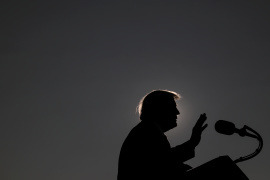






0 notes
Text
Azerbaijan's Jewish Community calls on American Jews to condemn Armenian violence and to ...
New Post has been published on https://armenia.in-the.news/society/azerbaijans-jewish-community-calls-on-american-jews-to-condemn-armenian-violence-and-to-49706-14-08-2020/
Azerbaijan's Jewish Community calls on American Jews to condemn Armenian violence and to ...
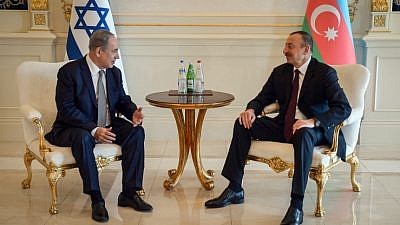
(August 14, 2020, JNS Wire)
Israeli Prime Minister Benjamin Netanyahu meets with the Azerbaijan President Ilham Heydar Oghlu Aliyev on Dec. 13, 2016. Photo by Haim Zach/GPO.
BAKU, August 13, 2020 — The Jewish community of Azerbaijan is calling for more American Jewish organizations to condemn the alleged hate crimes committed at a recent Armenian-organized protest outside the Azerbaijani Consulate General in Los Angeles.
On July 21, some of the 3,000 Armenian protesters in the Brentwood neighborhood attacked a group of two-dozen Azerbaijanis, causing injuries which required urgent medical care. The Los Angeles Police Department (LAPD) subsequently launched a hate-crime investigation into the incident, and the American Jewish Committee and the Simon Wiesenthal Center condemned the violence. The Los Angeles demonstration was organized by the Armenian National Committee of America (ANCA) lobby’s Western Region, which recently called on Israel to “rethink its relationship with Azerbaijan” in an op-ed in The Jerusalem Post. On August 12, the LAPD announced that it is seeking help identifying a man who police say was involved in an assault during July’s protest.
The protest followed last month’s attack by Armenia across the border with Azerbaijan, which killed 12 people and threatened Azerbaijan’s pipeline infrastructure, a vital source for Europe’s energy security. It marked the latest flare-up in the protracted three-decade long Armenia-Azerbaijan conflict. Despite mediation efforts co-chaired by France, Russia, and the U.S., Armenia continues to occupy approximately 20 percent of Azerbaijan’s internationally recognized territories in violation of four U.N. Security Council resolutions and numerous other international documents.
Subscribe to The JNS Daily Syndicate
by email and never miss
our top stories
Given Muslim-majority Azerbaijan’s pioneering cultivation of deep ties with Israel as well as the presence of a thriving community of “Mountain Jews” in Azerbaijan for centuries — a Jewish community which reports that it has not encountered anti-Semitism — Azerbaijani Jews are urging American Jews to express increased solidarity during these tense times both in the South Caucasus region and in U.S. cities where Armenians organize anti-Azerbaijan protests.
“While it is instinctual for American Jewish groups to take a neutral position toward the Azerbaijani-Armenian conflict in Eurasia, these organizations must not ignore the facts about both countries,” said Anatoli Rafailov, Member of the Parliament of Azerbaijan. “Azerbaijan is a highly strategic Muslim-majority ally for Israel and an inspirational paradigm for fruitful Jewish-Muslim ties. At the same time, Armenia’s close relationship with Iran and the deep-seated anti-Semitism among the Armenian population should be highly concerning for the U.S. Jewish community.”
Anatoli Rafailov continued, “We understand that in a perfect world, American Jews would want to avoid ‘choosing a side’ in the Armenia-Azerbaijan conflict. Nevertheless, they should still speak the truth. In line with the Jewish value of ‘tikkun olam’ (repairing the world) and the U.S. Jewish community’s historic role in working to counter all forms of bigotry, American Jews should condemn Armenian hatred whenever it rears its ugly head. They should also vocally support Azerbaijan, a crucial ally of Israel, when its territorial integrity is blatantly violated and when its citizens are attacked.”
Armenian society displays systemic anti-Semitism. A Pew Research Center survey found that 32 percent of Armenians would not accept Jews as fellow citizens. The Anti-Defamation League’s (ADL) “Global 100” study documented that a majority of Armenians believe a variety of anti-Semitic stereotypes are “probably true” — including that Jews have too much power in the business world (72 percent) and financial markets (68 percent), are more loyal to Israel than to the country where they live (68 percent), have too much power over global affairs (51 percent), and have too much control over the American government (51 percent). In fact, Armenians (58 percent) agree with anti-Semitic stereotypes at a higher rate than Iranians (56 percent), according to the ADL study.
Another indicator of Armenian anti-Semitism is the monument erected in the country’s capital of Yerevan which honors Garegin Nzhdeh, a Nazi collaborator and commander of the Wehrmacht’s Armenian Legion. That unit fought in Crimea, the Caucasus, and southern France as the Nazis rounded up Jews and resistance fighters and marched them to death camps. In 1945, Nzhdeh was sentenced to 25 years in prison by a Soviet court for his war crimes and collaboration with the Nazis.
Additionally, the ANCA has promoted age-old anti-Semitic tropes on Twitter, including the blood libel accusing Jews of murdering Christians.
In regard to Iran, Armenian banks have historically helped Israel’s archenemy circumvent American and international sanctions, particularly by allowing Tehran to obfuscate payments to and from foreign clients. In 2019, the U.S. Treasury Department sanctioned Armenia-based Flight Travel LLC for its connection to Iranian Mahan Air, which is linked to Iran’s Islamic Revolutionary Guard Corps. Further, Armenia has partnered with Russia on Moscow’s military mission in Syria, aligning itself with Iran and Hezbollah in their backing of dictator Bashar al-Assad’s regime.
Milikh Yevdayev
Head of the Community of Azerbaijan’s Mountain Jews in Baku
Alexander Sharovski
Chair of Baku Religious Community of European Jews
Abik Charukchiyev
Chair of the Community of Georgian Jews
Read original article here.
0 notes
Link
Cologne, Germany is increasingly becoming a popular city destination for Christmas lovers for different reasons. Admittedly, though the city may not be as famous as other holiday destinations like Florence, Prague, Rome and Berlin it still has so much to offer.
Sign up to get our blog in a weekly email
The key advantage of enjoying the Christmas trip in this fourth largest city in Germany is that you do not have to deal with huge crowds. Cologne is a hugely unexplored gem compared to other top-rated city destinations.
During the Christmas season the city has a lot of nightlife events Christmas based, sumptuous foods and drinks, and much more. Subsequently below take a look at some of the leading things to see and do in this historic and cultural city.
1. Christmas Markets
Cologne offers one of the best destinations for experiencing the popular Christmas Markets in Germany and Europe. The origin of the markets can be traced up to the 13th-century. From the city center there are in excess of five winter-themed markets with all of them exceptionally decorated to give the festive feeling.
As one of the earliest Christmas markets you can expect to find different handmade gifts and products in wooden stalls well illuminated by Christmas lights. The brick and mortar Christmas markets provide you with a chance to purchase a variety of Christmas presents like Christmas cake, Christmas trees, wooden toys, lanterns, ornaments, etc.
Alternatively it is also possible to buy presents online through the Schmidt Christmas Market. You can get Christmas goodies not only from Germany but also from numerous locations globally like Spain and Russia. Within the USA, the Schmidt Christmas Market provides free shipping for purchased products.
2. Cologne Cathedral
In Germany, this place of worship is a top visited attraction site. Its 19th-century twin towers are openly visible in the city’s horizon. Going on the basilica top offers a chance for observing the scenic views of Cologne.
The soaring cathedral is a UNSECO site with breathtaking interior attractions, priceless art and history. The main attraction is definitely the Three Kings Sanctuary. The repository has bones of the men from the biblical story about Jesus Christ’s birth. After the transportation of remains through different expanses, the pilgrims finally brought them to the cathedral, a final resting place.
Next to the Cologne Cathedral you can also visit the modern Museum Ludwig. The focus of the museum is on modern-day paintings collection. There are world-class recent art exhibitions from artists like Andy Warhol.
3. Enjoy Rhine Boating
Apart from Germany, the Rhine River passes through other European countries like France. When roaming the river using small boats you are guaranteed to enjoy the sights of Cologne along the Rhine in a more relaxed and quieter manner.
In the Christmas season expect the Christmas spirit to hover around. In your day cruise which may take a couple of hours you may have drinks and Christmas carols to sing along. For sailing during the night, it gives you an out of the movie experience as there is stunning light reflection off the river water.
4. Visit The ‘Schokolade’ Museum
The Chocolate Museum is conveniently situated on the old town riverbanks. This particular museum is about 500 meters from the small structure used for displaying the level of the River Rhine at any given time.
Visiting the museum provides you with an opportunity to know almost everything concerning chocolate and cocoa including how this delightful food is made. There is also the making of freshly tasting chocolate within the museum that you can enjoy as you observe the Rhine.
5. Old Town
If you want to go back in time then you have to visit the Old Town of Cologne. Remember that a significant chunk of the Cologne history was destroyed and lost through war, particularly World War II bombing.
Thanks to a lot of preservation and restoration work done on buildings you will see that the small museums and historical churches are in fantastic condition.The Old Town also houses the Romano Germanische Museum which has been used for preserving the Roman artifacts that the city’s excavation unearthed.
6. Botanical Garden
This charming garden is located next to the Cologne Zoological Garden with more than 10,000 wildlife exceeding 800 species. The park is about 11 hectares with a beautiful glass palace having colorful flowers, splendid gardens and expansive lawns.There are different crops cultivated in the garden including cinnamon, cocoa and sugar cane.
The architectural elegance of the garden was influenced by the Crystal Palace, a massive historical glass structure that was built and demolished in England.
7. Hohenzollernbrücke Bridge
The bridge was built initially for both rail and road transport. Nonetheless, after the 1945 substantial damage because of war it was explicitly rebuilt for rail and crosswalk. This particular bridge is heavily used in Germany by over 1,100 trains each day.
Over the last few years the Hohenzollern Bridge has not been spared from the love padlock fashion. Couples come to the bridge to attach padlocks and subsequently throw the keys into the Rhine River to signify an unbreakable bond and love. The pleasant view of the river adds some air of romance for lovers.
8. Bike Hiring
You can also rent a bike in Cologne for cycling throughout the city. Using a bike you can go to see the Cologne Zoo, move along the river and go through parks. It is even possible to carry your bike along on trams and trains to explore the countryside around the city.
In the central railway station, there is a tourist office for sharing ideas about your biking and hiking options.
9. Farina Fragrance Museum
The success of the globally popular cologne perfume originated from this German city nearly 300 years ago. Johann Maria Farina, the fragrance water inventor, named his product Eau de Cologne in honor of his area of residence. The inventor and his family settled in Cologne after migrating from Piedmont, Italy.
Because of the success of the famous fragrance in improving the city’s reputation that is why there is a museum solely dedicated to it. The depository has a cellar, furniture and equipment used by the Italian native and photos showing the complicated production art throughout the years.
There is also a presentation of the initial scent of the perfume since during the time it was invented no trademark laws existed. Thus there is a high chance you have come across copycats of this classy perfume.
10. Shopping
The city has lots of boutiques and shops to visit. There are assortments of renowned German departmental stores, local antique and art shops and international brands.
The Belgian Quarter provides some unique and trendy shopping experience in Cologne due to the combination of various architectural styles and antiquated accessories, souvenirs and exceptional clothes. Apart from the handmade accessories and antique attires, the neighborhood also offers visitors live music settings, bars and eateries.
In Conclusion
There is much more Cologne has to offer as a destination for spending the Christmas season. There are traditional bars, restaurants, museums, parks, Christmas markets, Romanic churches and many other things to do and see.
Sign up to get our blog in a weekly email
If you plan to visit Cologne for your Christmas holiday it can be helpful to learn how to pronounce and spell the name of the city correctly. When in Germany, you will not see any maps, directions, or signs with “Cologne.” spelling. The Germans spell their city as Köln. The local spelling and pronunciation of the city name can make you feel like a local and come in handy when asking directions.
Shop now at Schmidt Christmas Market for all your Christmas Decor
0 notes
Text
2nd January - Mai Chau and Hanoi
Morning in Mai Chau and then back to Hanoi. Went on a cycle ride round the area (yes Winnie on a bike!!). Saw how the locals lived, cultivating rice and vegetables - but the more entrepreneurial ones are into tourism. Many home stays and restaurants. Our guide talked about locals depending on subsistence farming as a living, but I think things have moved on. We avoided cycling into a rice paddy so now back to Hanoi. Got back to the city and out for more sightseeing. Went to the Vietnam Women's Museum. Lots about the role of women in the wars with France and the US. Vietnam seemed to be at war for 30 years from 1945. Women seemed to have a much more central role than expected (and much more than in the UK during the Second World War). More reading for me to do!! Our second stop was the Metropole hotel where cousin Donald met Kim Jong-in last year. Very different surroundings from rural Vietnam!! Had some drinks and food - still cheaper than taking K&B out in London. Than back to our hotel and a big choice - a taxi or a rickshaw. Only one choice there - although the guy looked as if he'd second thoughts when he saw us. But we had a good, but slow, trip back with no incidents, despite cars and motorbikes flying past us all the time. So that's our time in Hanoi finished and off to Halong Bay tomorrow.


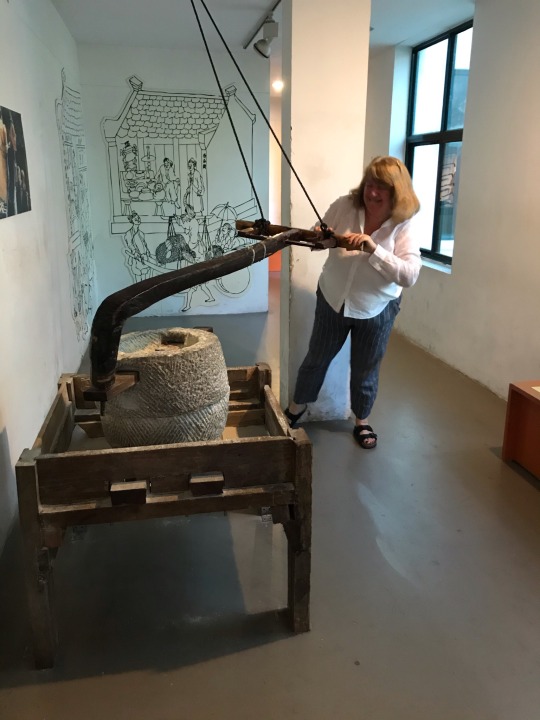





0 notes